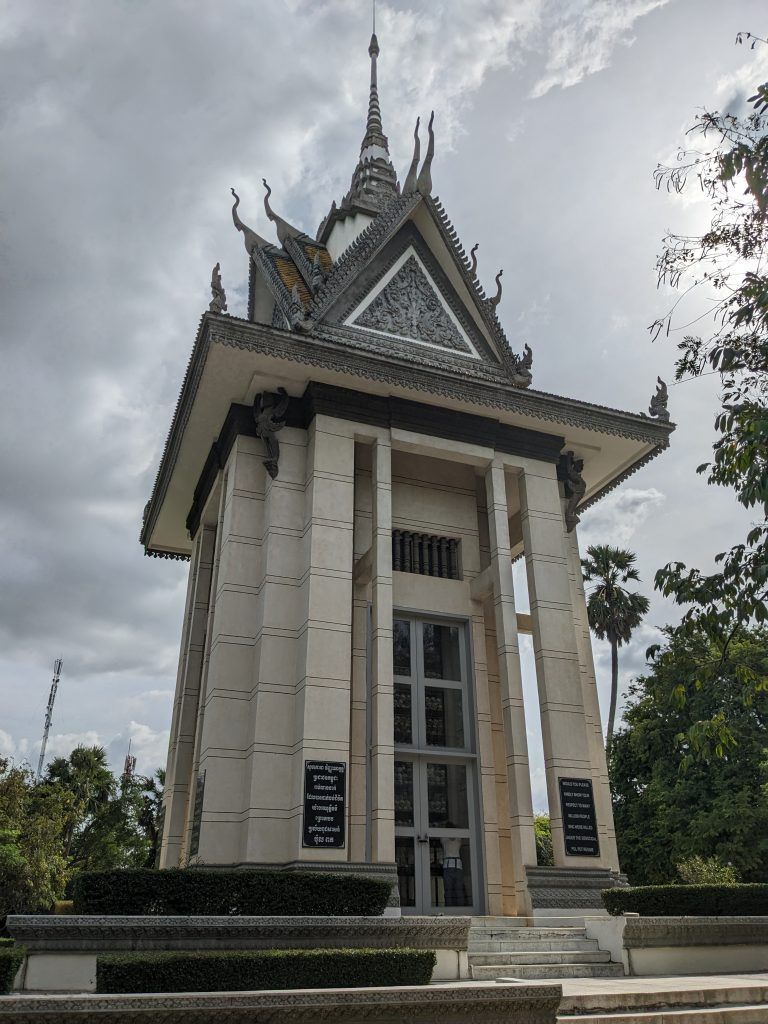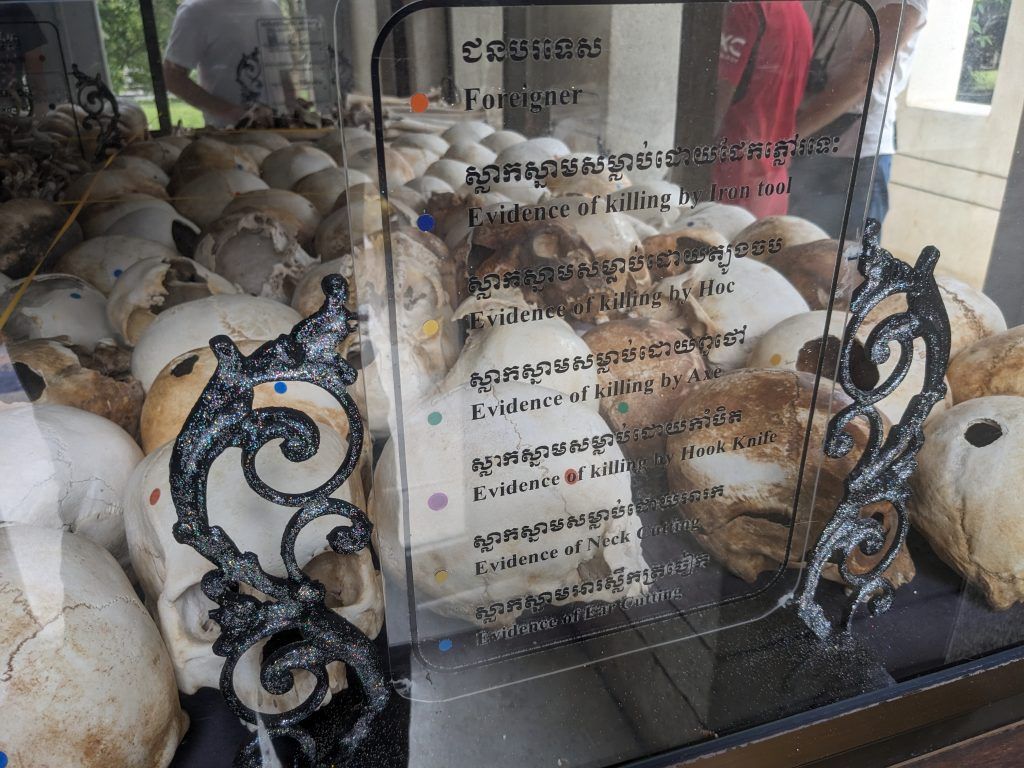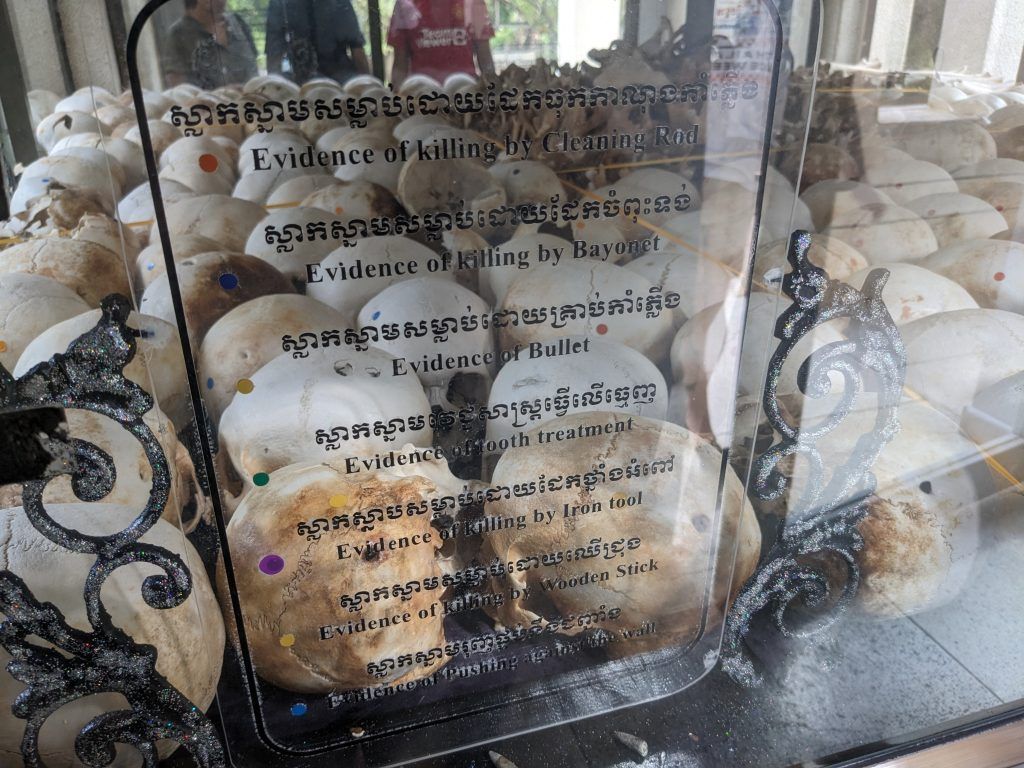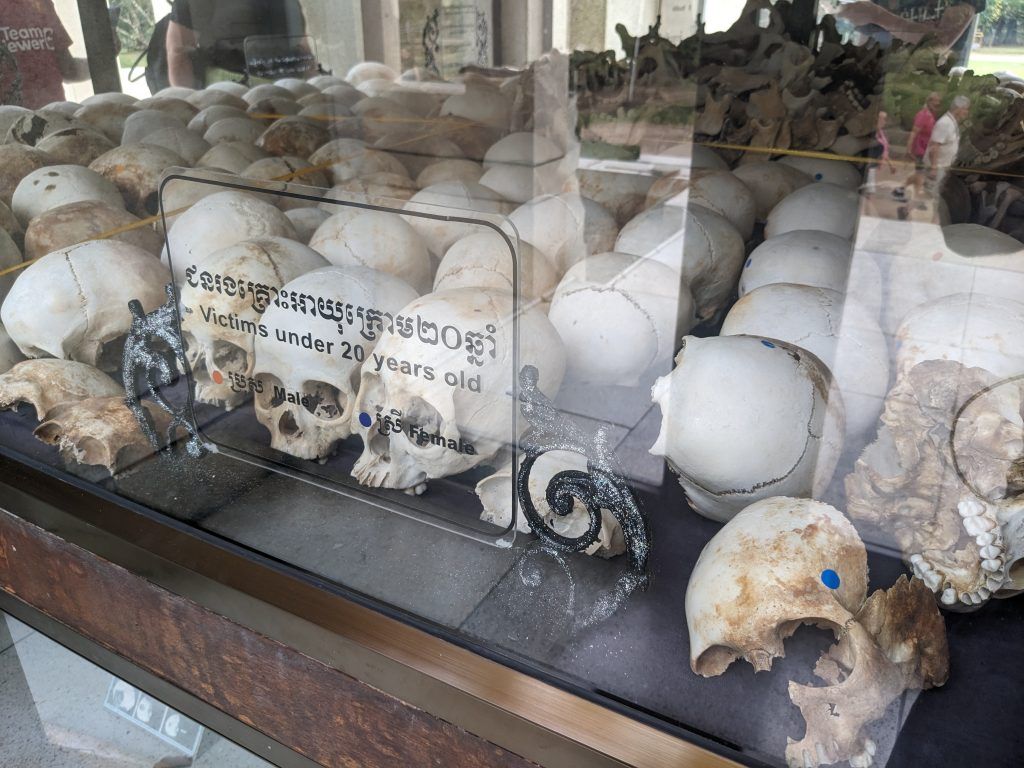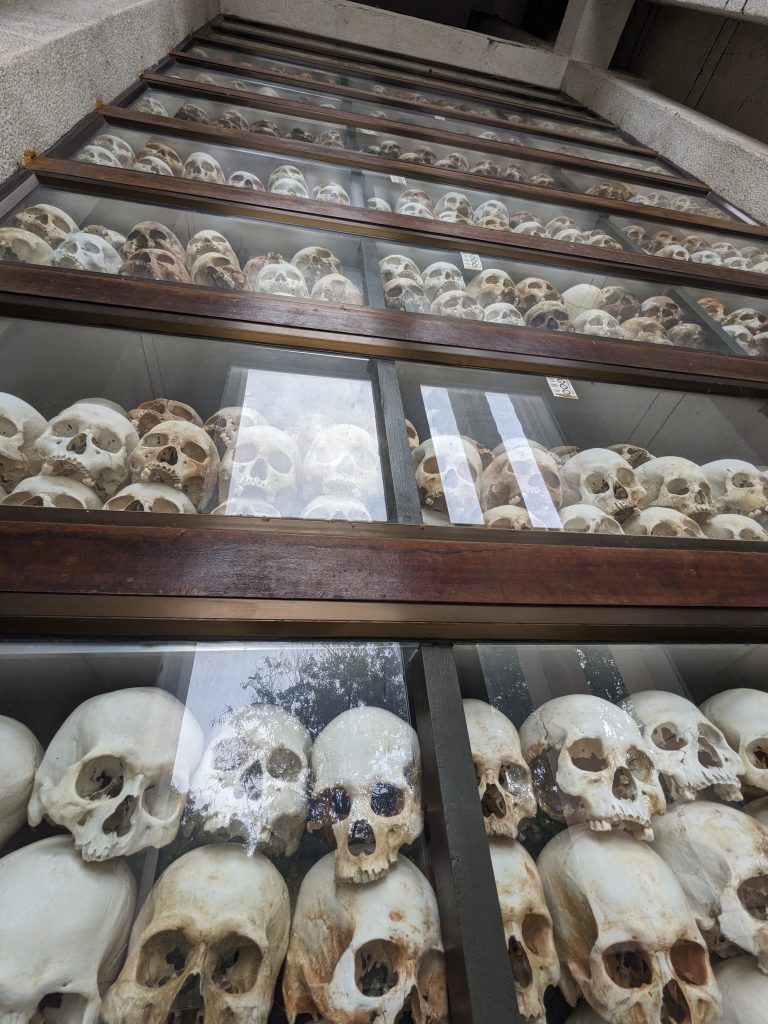Phom Penh is city with a kind of chaotic freedom. It is sidewalks where cars and motorcycles outnumber pedestrians, if there are even any sidewalks at all. It is watching tuk tuks play chicken at intersections with no lights or traffic control. It is having a nightlife that’s not as celebrated as Bangkok’s but with just as much potential debauchery. It is the one place in SE Asia where I was warned to be careful of eating the street food. It has no zoning so luxury apartments can rise amidst urban squalor. It is having no building ownership on older buildings so each apartment owner fends for themselves. It is not having to be Cambodian to work or start a business (unlike the rest of SE Asia), so a ton of expats here can do diverse things like own bars, start boxing gyms, create video productions companies, and start bands, that are significantly more difficult to do in other nearby countries.
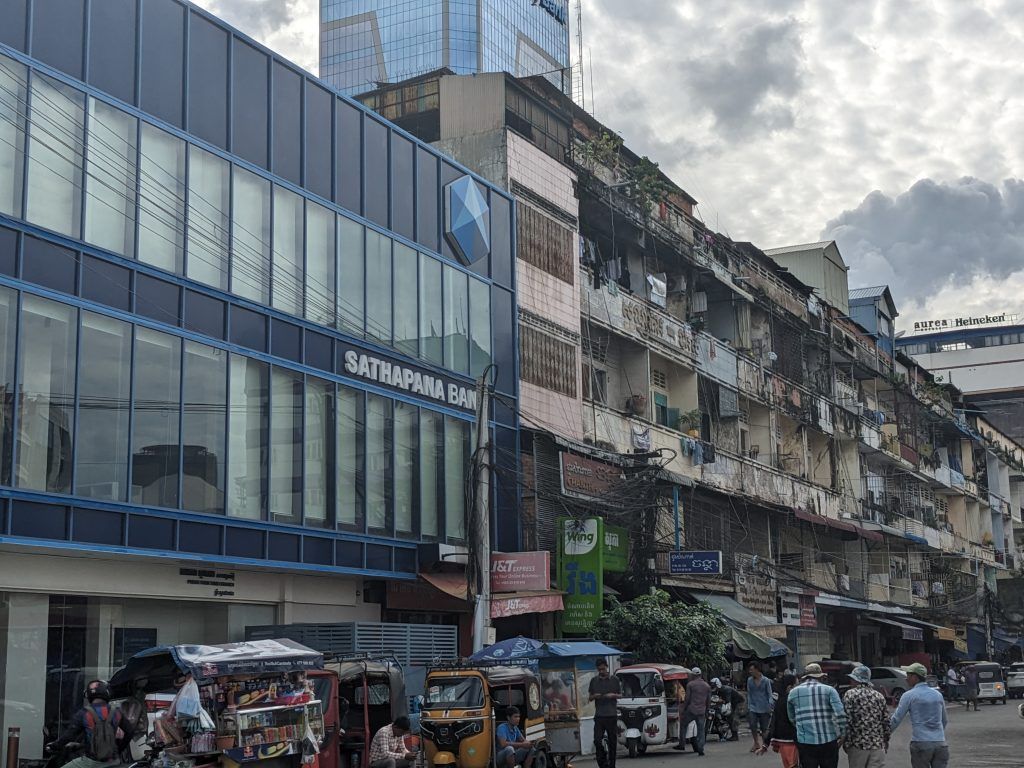
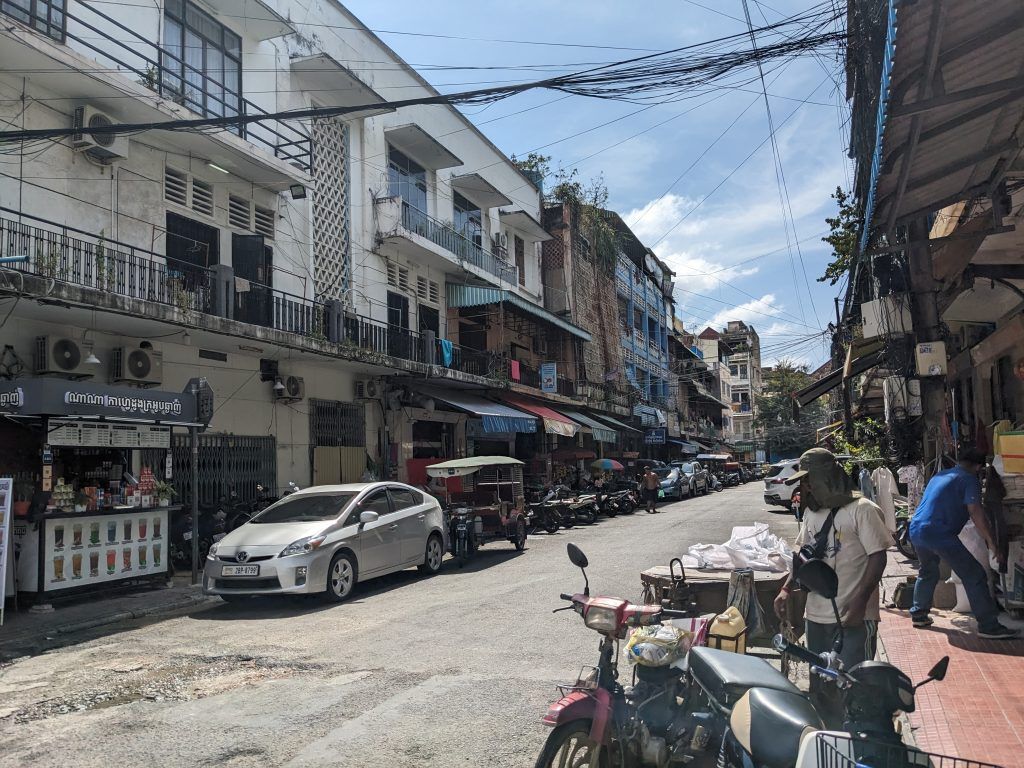
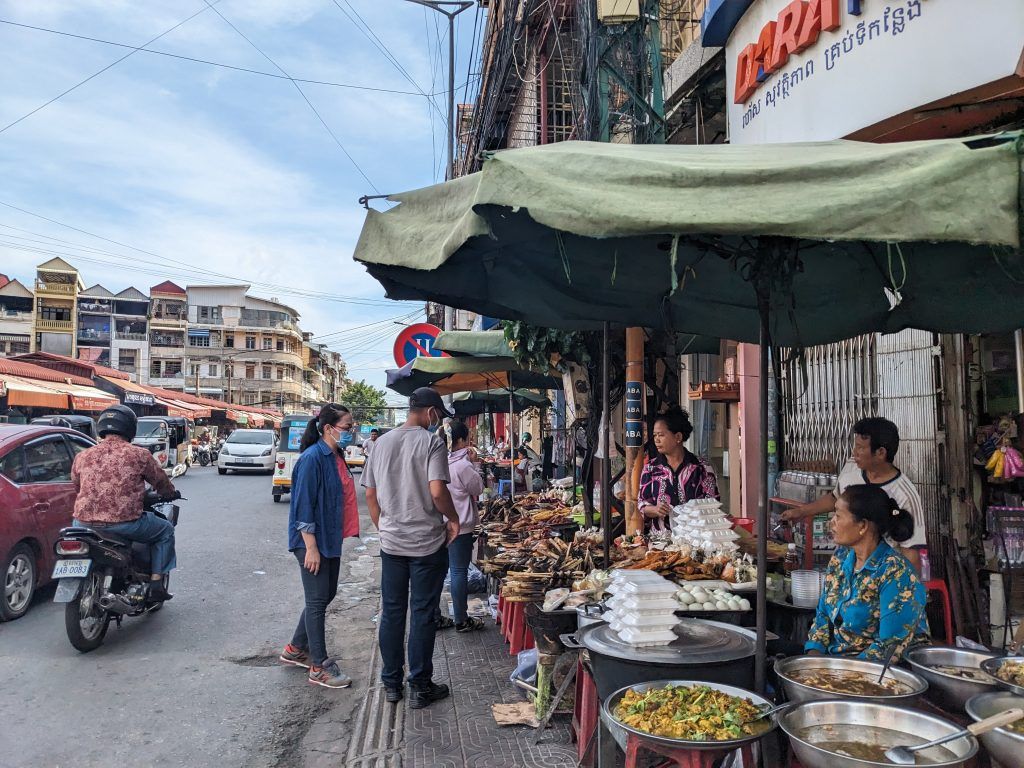
Why is this so? Well, a little history might go a long way here:
You are Cambodia. It’s around 1850 and your once might Khmer kingdom is slowly being whittled away by the Thais on one side and the Vietnamese on the other side. Enter the French. In 1864 you become a ‘protectorate’ of the French, which means you are basically ruled by them, but your territory is no longer at risk. For almost 100 years, with a brief, brutal interlude by the Japanese, you continue to be this protectorate. Then in 1954, the Vietnamese beat back the French and just before that, in December 1953 you become independent. You have a bit of a golden period in the 1950s and early 1960s.
But the neighboring war in Vietnam is intensifying. Vietnam sets up communist bases in your country. In 1969 the Americans secretly try to bomb them. In 1970 the US and South Vietnamese invade to flush out the Viet Cong. But the Viet Cong withdraw more deeply within your borders. For four years you’re carpet bombed by the US. Hundreds of thousands of people flee to your cities as refugees. You’re destabilized. In 1975 Phomn Phen surrenders to Pol Pot and the Khmer Rouge communists. The killing begins. In just under 4 years as many as 3 million people die (1.3 million directly from the Khmer Rouge and another 1.7 million from starvation and disease from their policies), out of a population of around 8 million. That’s amost 40% of your population. Describing it as horrific doesn’t even do it justice. Anyone over 45 years old now in Cambodia basically survived hell, even if they were just infants then.
Then the Khmer Rouge (with support from China) start border clashes with the Vietnamese. In late 1978 the Vietnamese had enough. They invade you and within two weeks topple the Khmer Rouge government. Through the 1980s Pol Pot and his cronies retreat to Thailand and continued to attack the Vietnamese led government. So the Vietnamese lay the world’s longest minefield along the Thai border to keep the Khmer Rouge out. For many Cambodians the 1980s were almost as bad as the 1970s. By 1989, as global Communism is falling, Vietnam unilaterally withdraws. They can no longer support their occupation.
You are free. In theory you become a democracy, but really become a dictatorship. There has been no effective opposition to Prime Minister Hun Sen, who has been in power from 1985 when he was set up by the Vietnamese, until this year, when his son become PM. So how are you supposed to rebuild? Your cultural and historical foundations have been badly shattered. I think it’s one reason why this place seems so chaotic. It was built on a foundation of quicksand that is just now starting to solidify.
As one example, I had a really large, comfortable and well appointed Airbnb apartment while I was here.
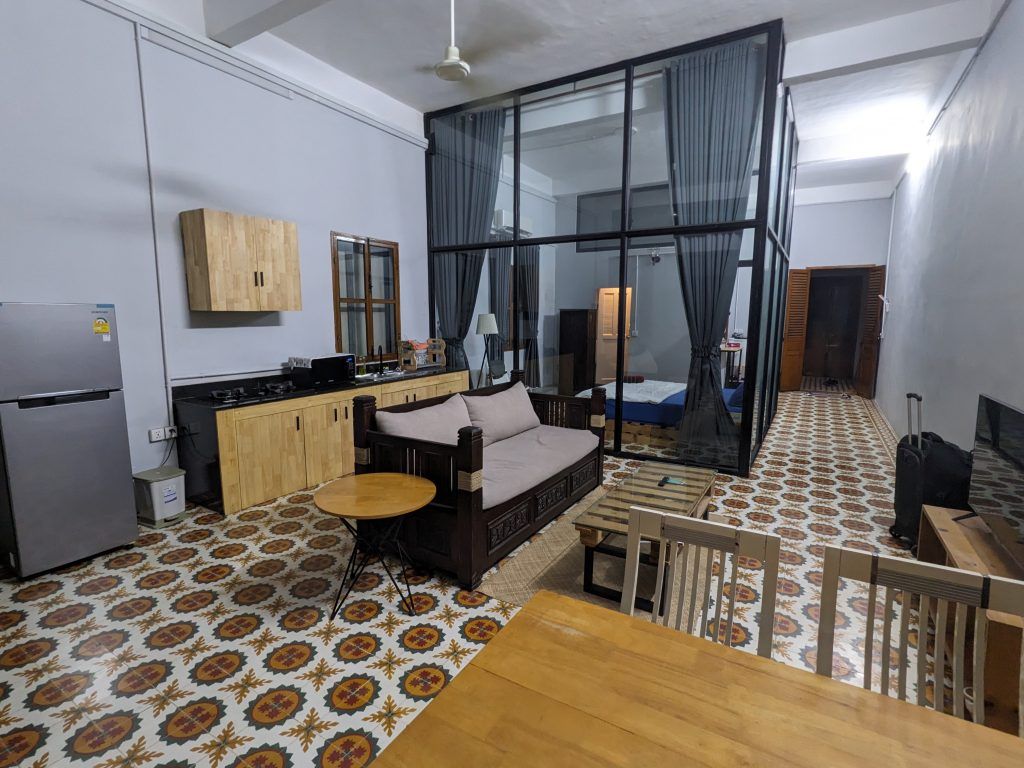
But after the Khmer Rouge left, there was no ownership left in the city. People just grabbed apartments and therefore the city ended up with no clear ownership of many, many buildings. If you want to buy one of these buildings now, you have to find a way to negotiate with every apartment owner.
So while my apartment was great, the rest of the building is in what would be looked at as a slum building in many Western cities. The view from my front door.
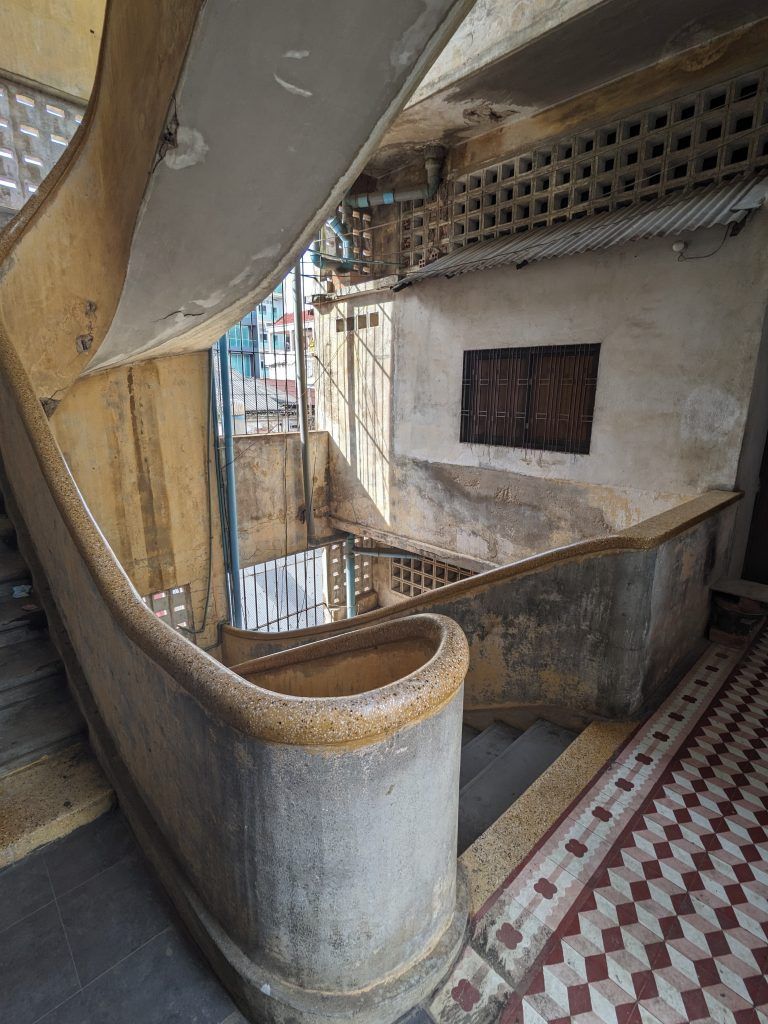
The view of the high tech lock system for my front door. The building and neighborhood were incredibly safe. I’d smile and wave at my neighbors as I passed them and they were all just normal Cambodians. Most seemed to be young families as there were a number of young children running around the building. It was just old and run down.
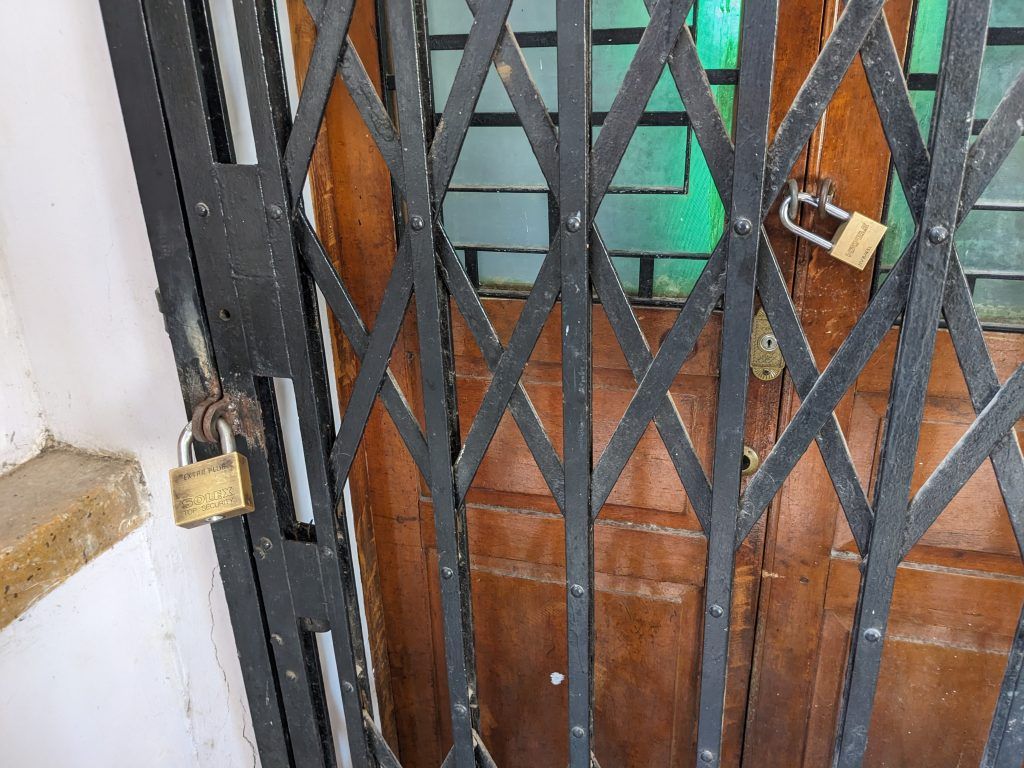
The “foyer” at the bottom of the stairs. At night I needed to use my phone flashlight to navigate it.
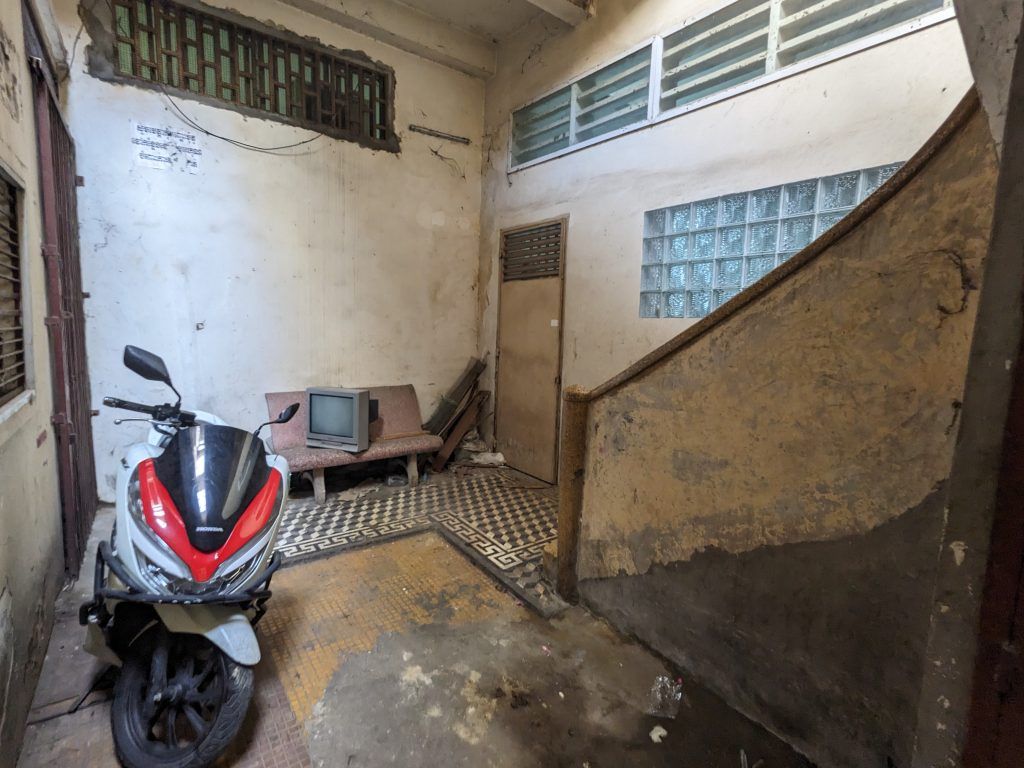
The “hallway” to exit and enter the building.
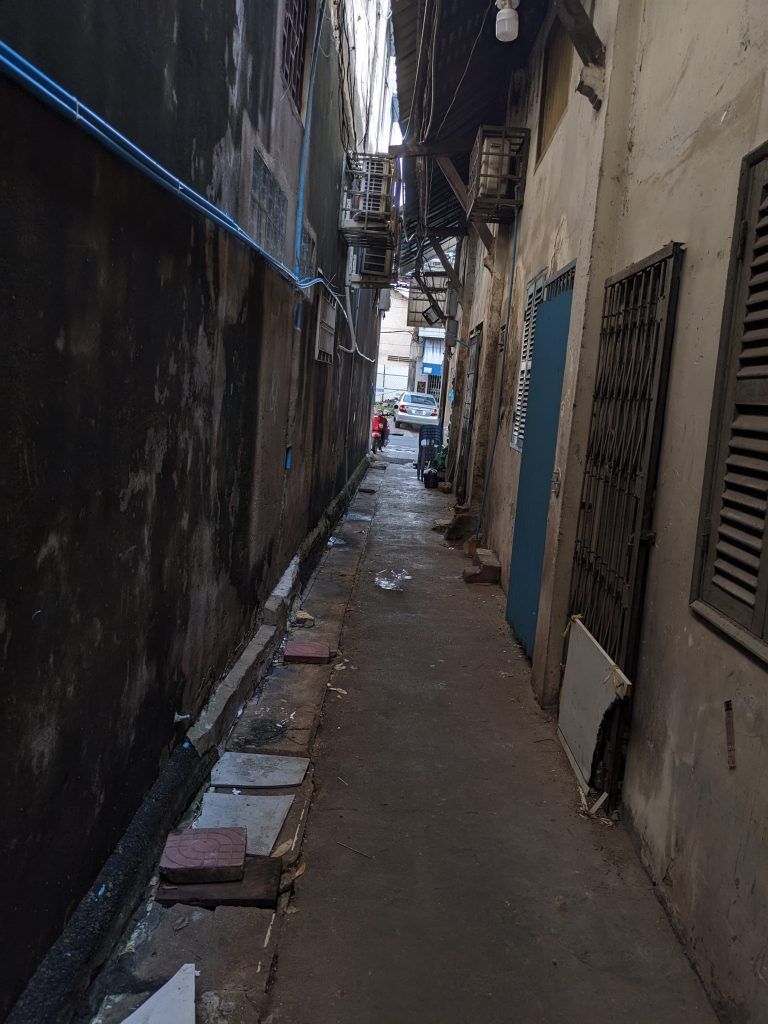
The view of the building with my small third floor balcony above and the “hallway” entrance just behind the food cart.
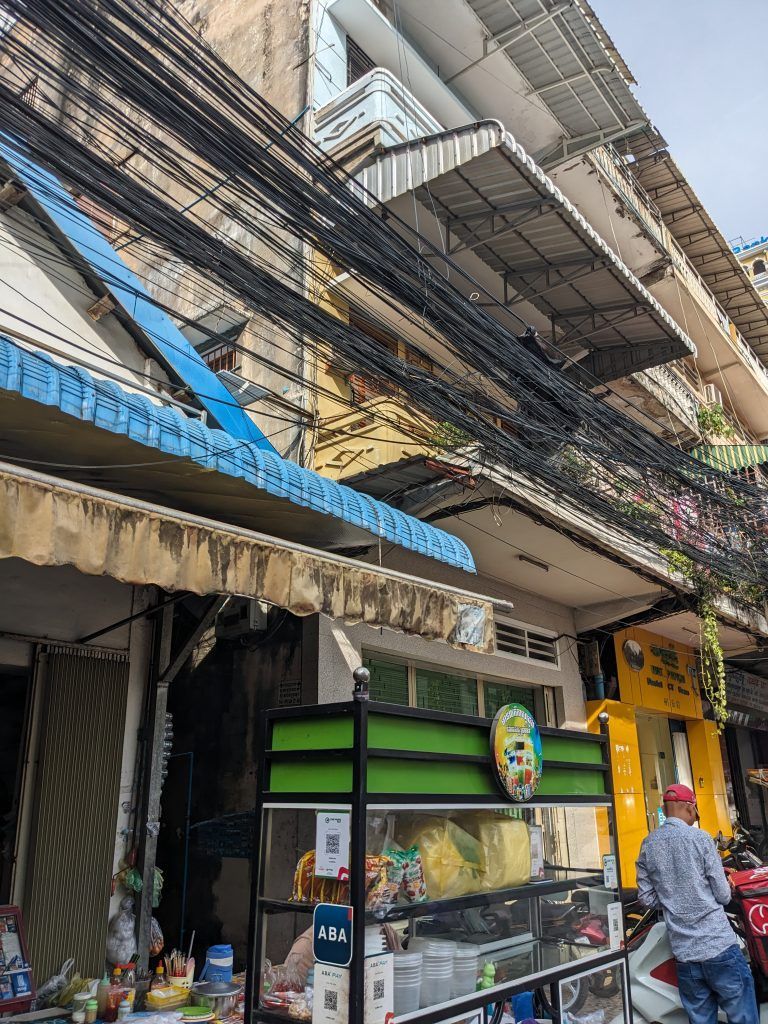
The view from my tiny balcony looking towards Phnom Penh’s Central Market.
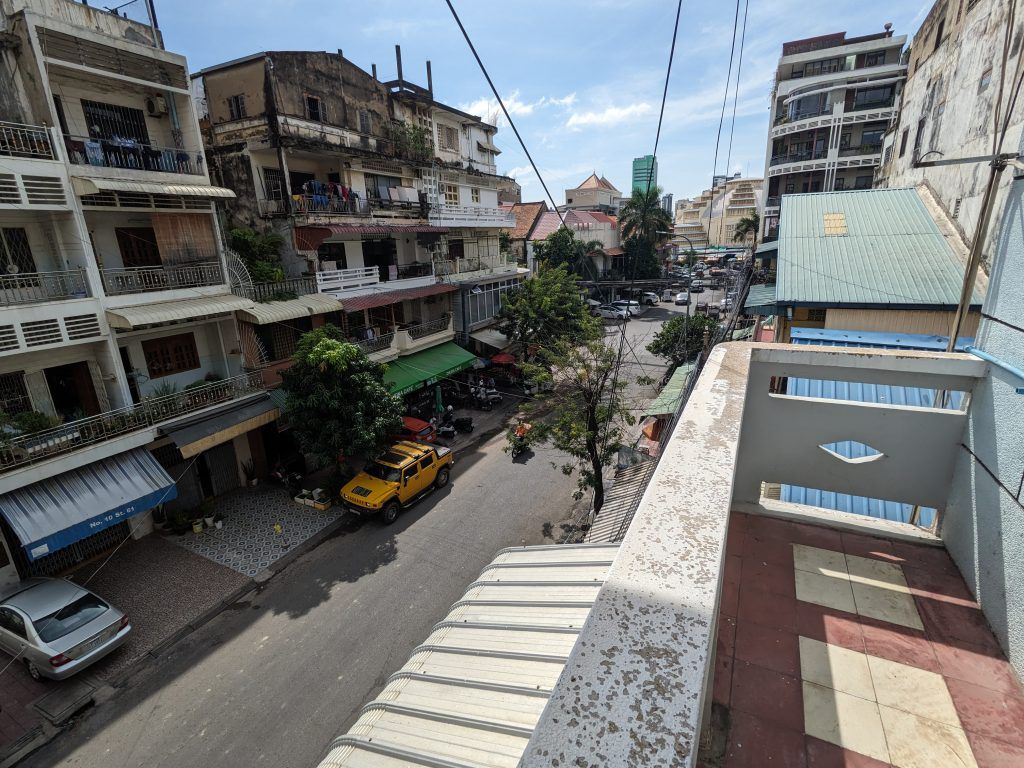
There were a few places with sidewalks and semi-controlled traffic.
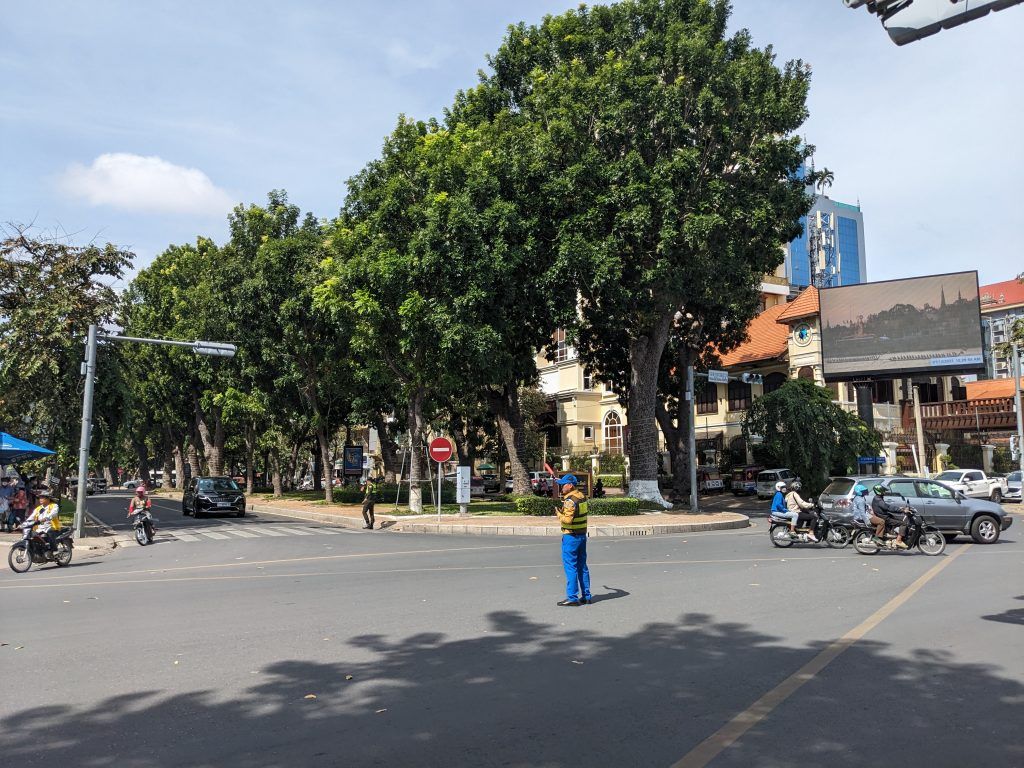
A couple of monks getting their rice bowls filled and then providing some nice prayers and chanting to their neighbors.
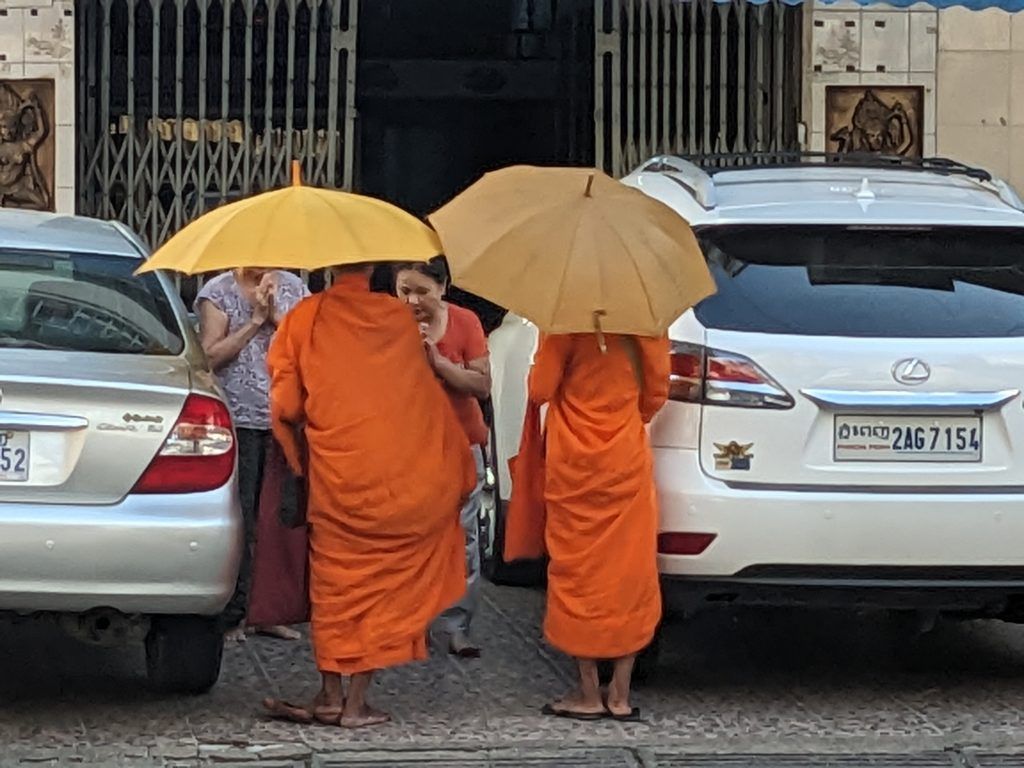
One of the major Buddhist temples in the city.
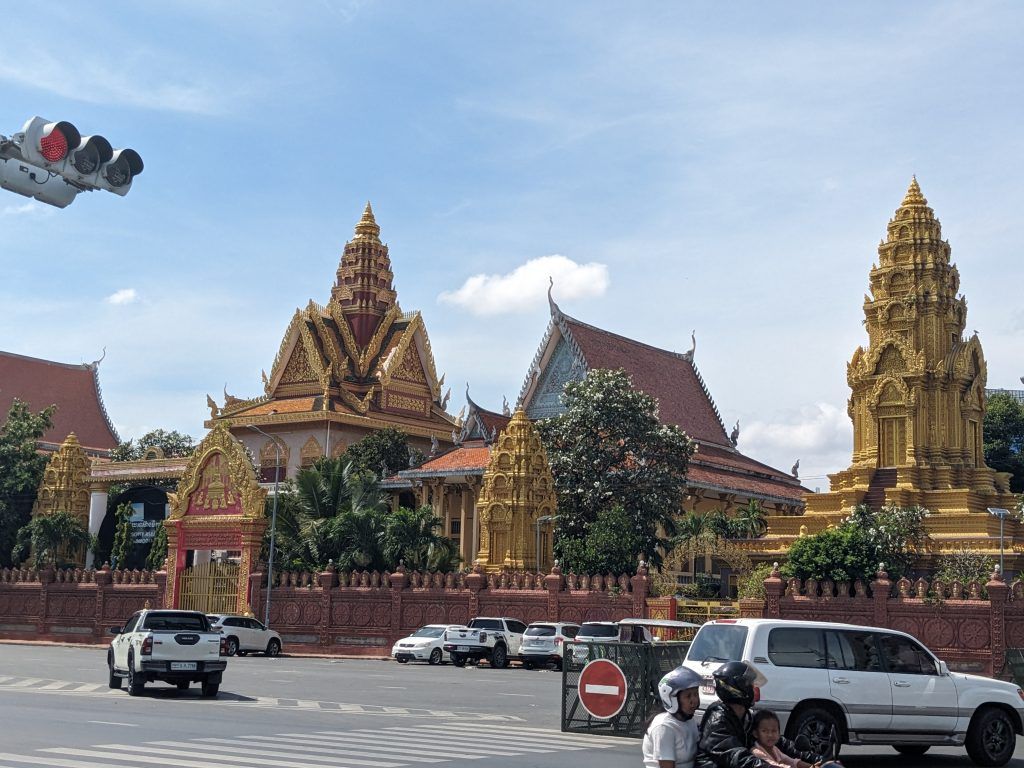
A view of the Mekong River.
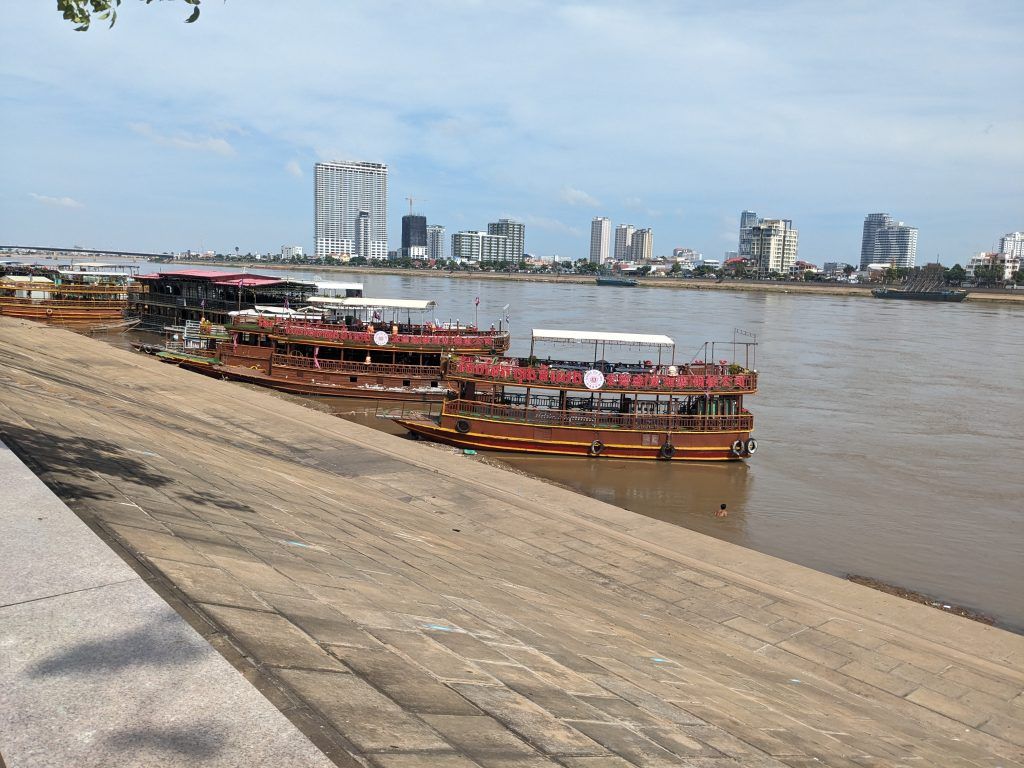
A sunset view of the city from a rooftop bar across the river.
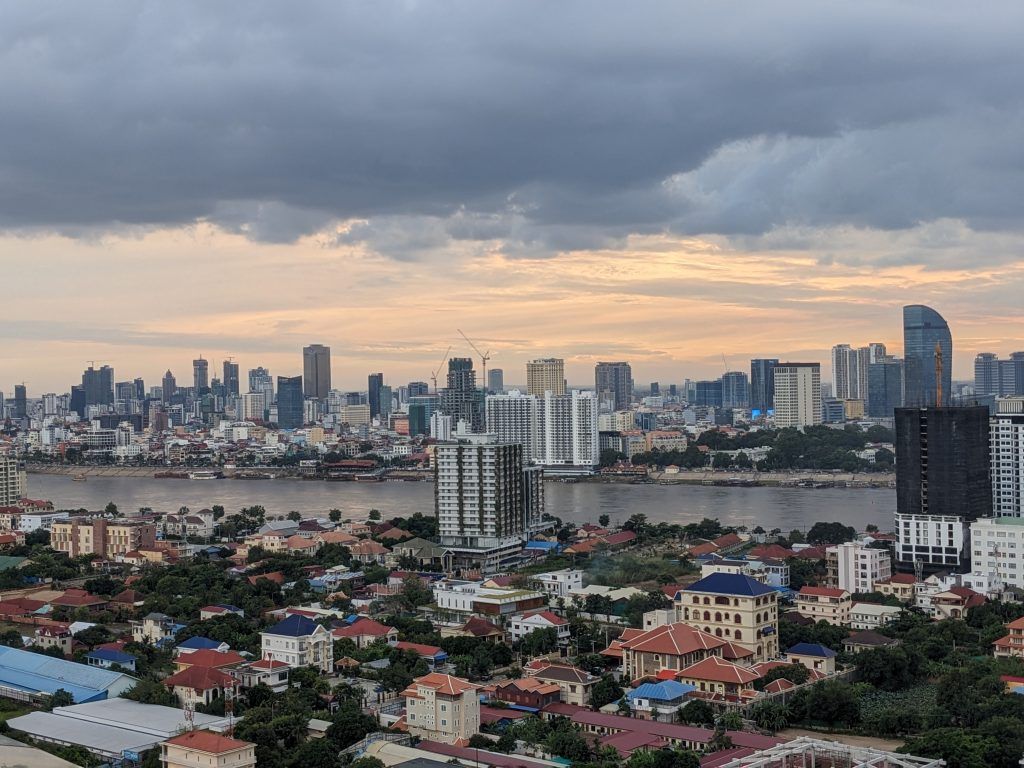
A friend from Hermosa Beach, Mark Rowley, who has been living in SE Asia off and on for almost 20 years, and in Phnom Penh for about 5 years now. He runs a production company here and he gave me a great tour of the city one night as a number of his expat friends were celebrating one of their birthdays.
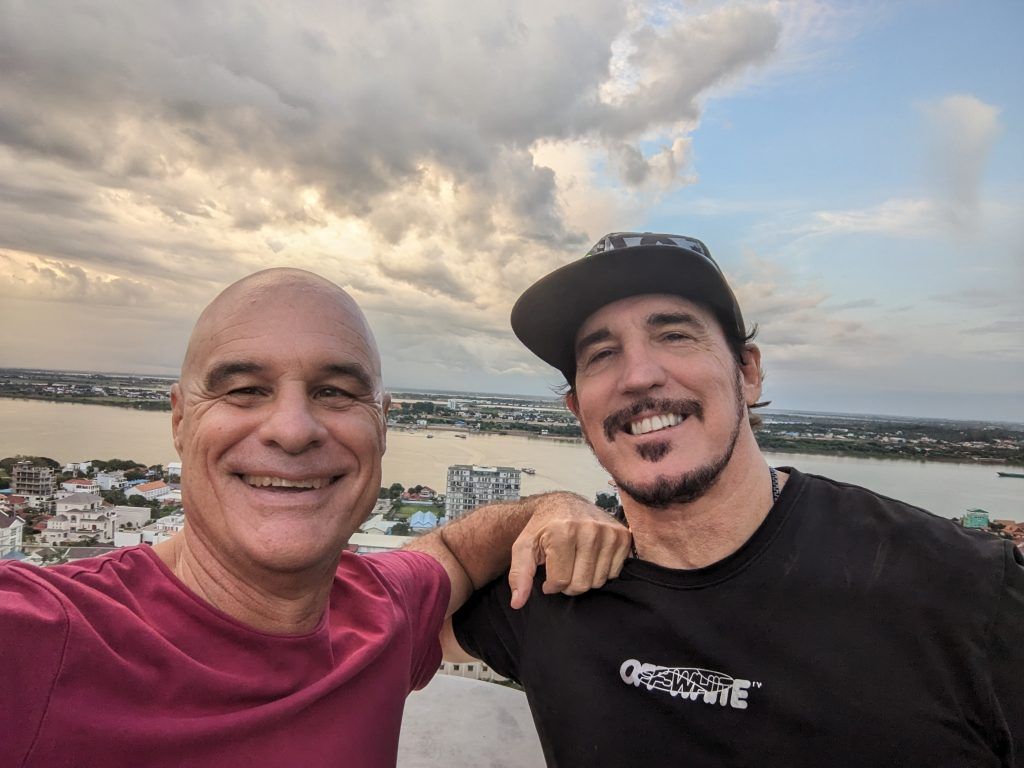
The Royal Palace
The Royal Palace is home to Cambodia’s royal family and is open a few hours per day for tourists. While not nearly as large as a similar compound in Bangkok, it is still a very beautiful and peaceful place among the chaos of Phonm Penh. The current king has led a fascinating and very unusual life, if you want to read more: https://en.wikipedia.org/wiki/Norodom_Sihamoni
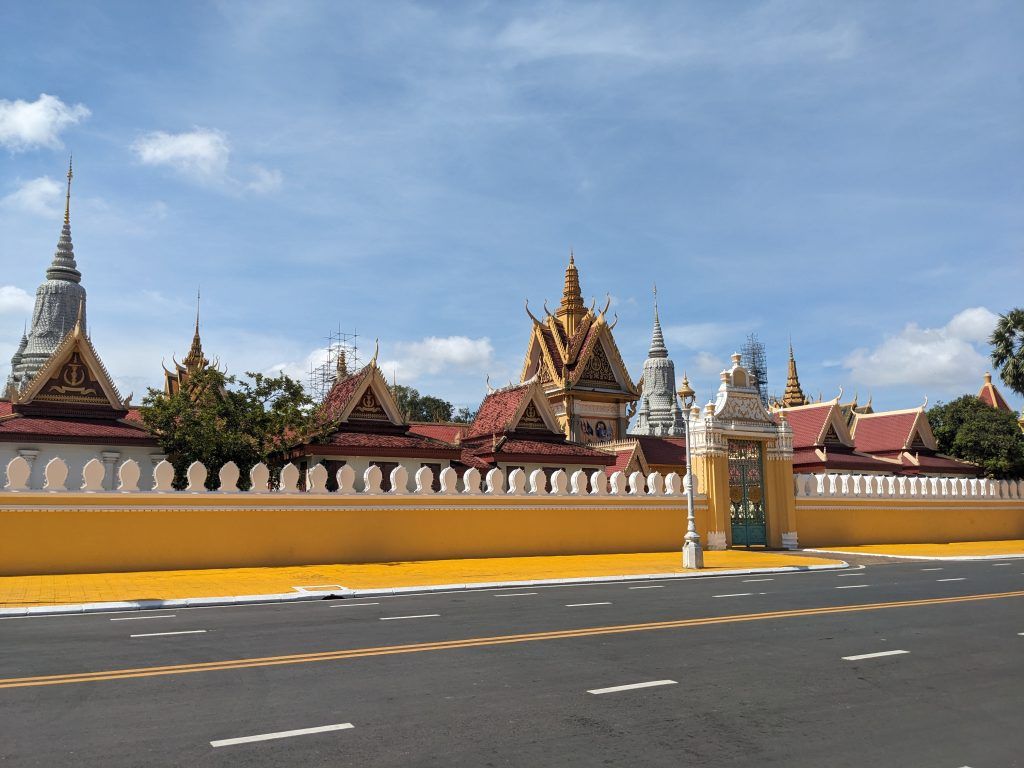
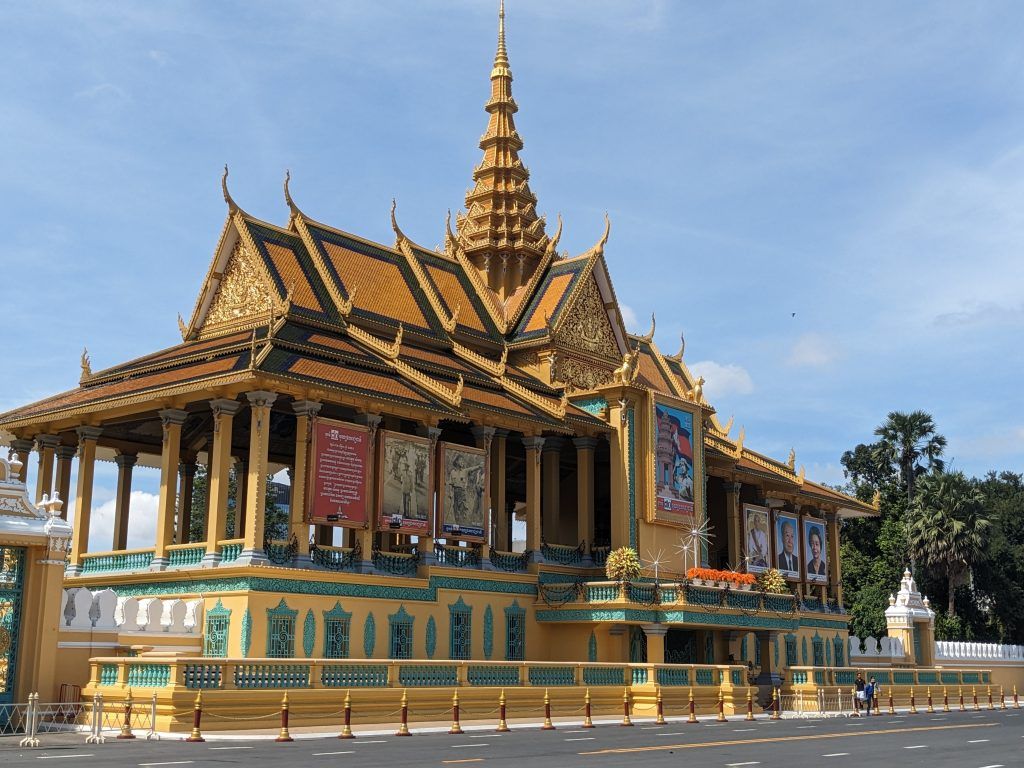
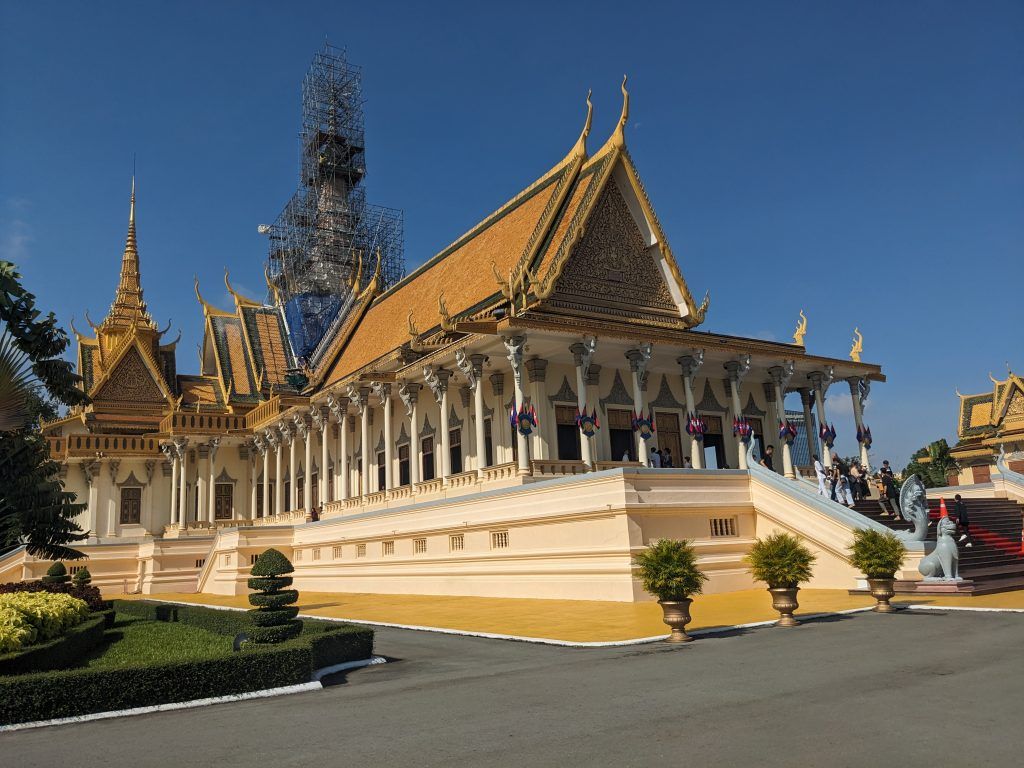
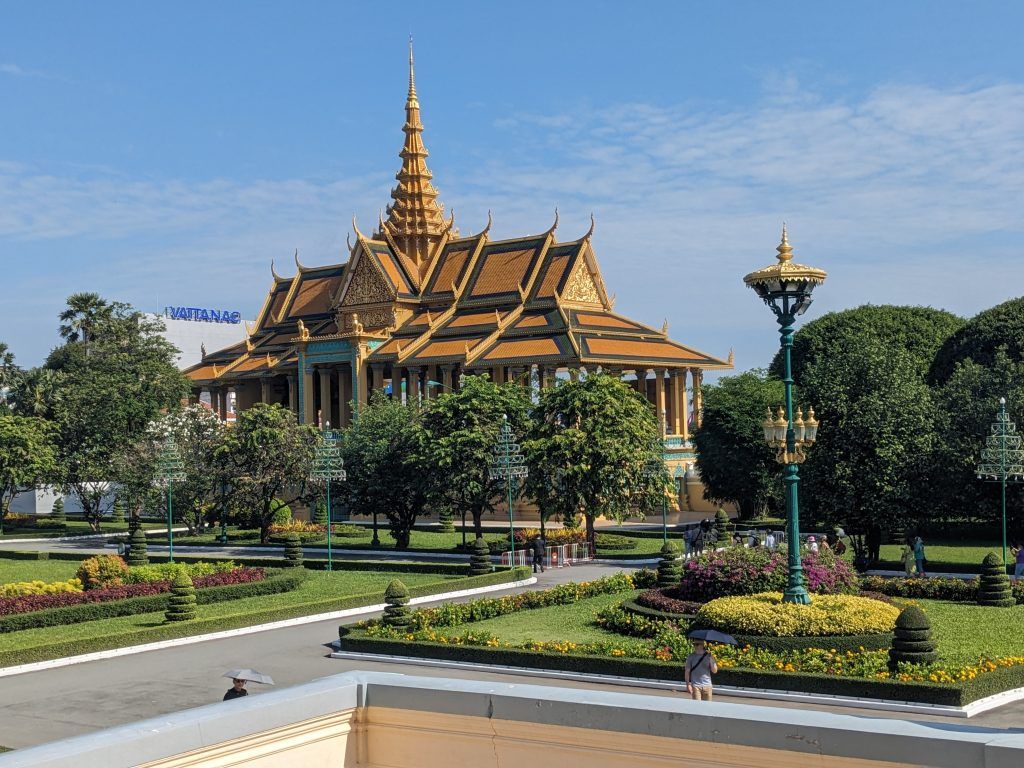
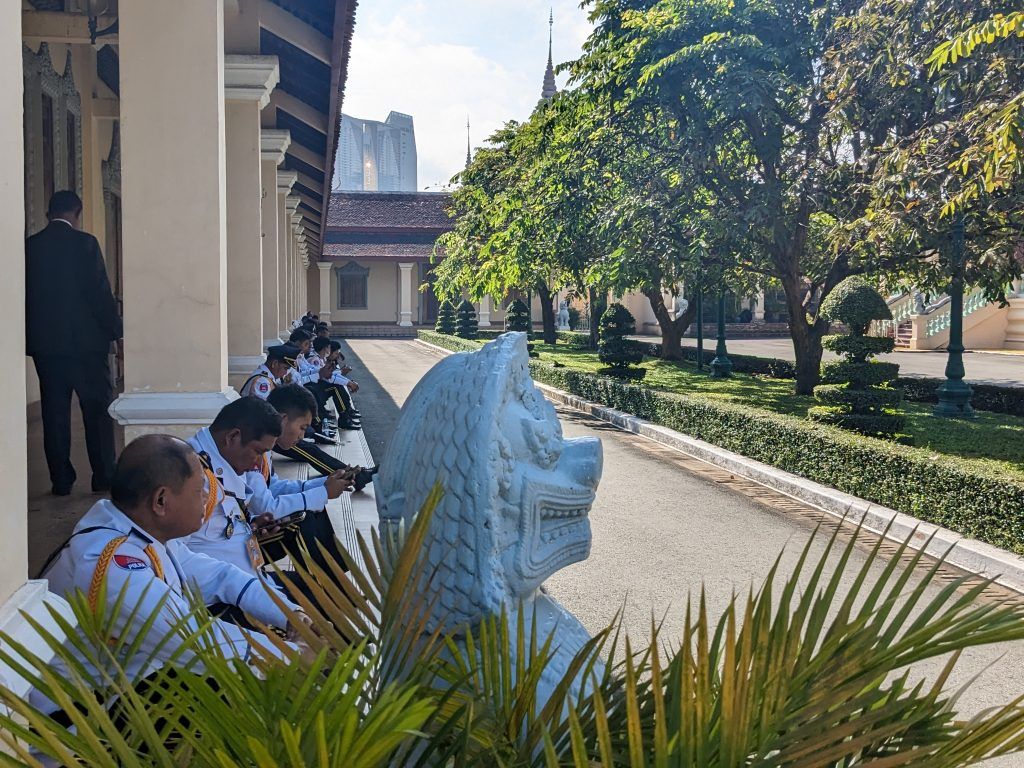
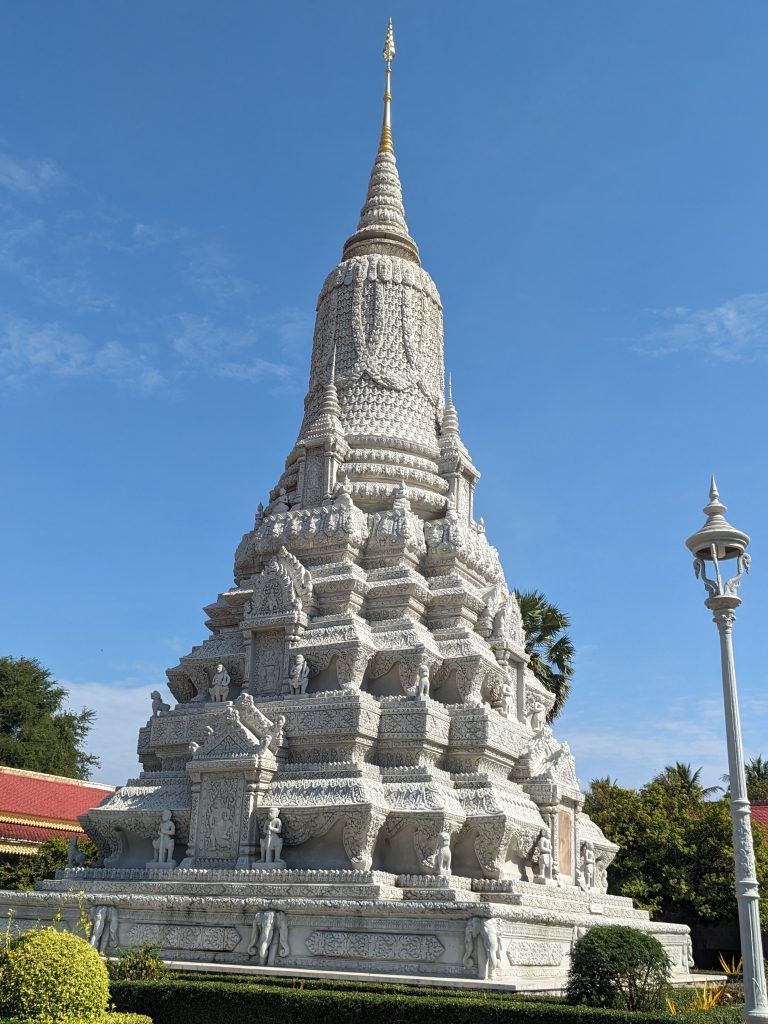
National Museum of Cambodia
Housed in a gracefully designed 100 year old building, the museum is home to the world’s finest collection of Khmer sculpture. The Khmer Empire ruled much of mainland Southeast Asia for over 600 years, and is most well known for its spectacular former capital in Angkor Wat. Many of the pieces in this collection are over 1,000 years old.
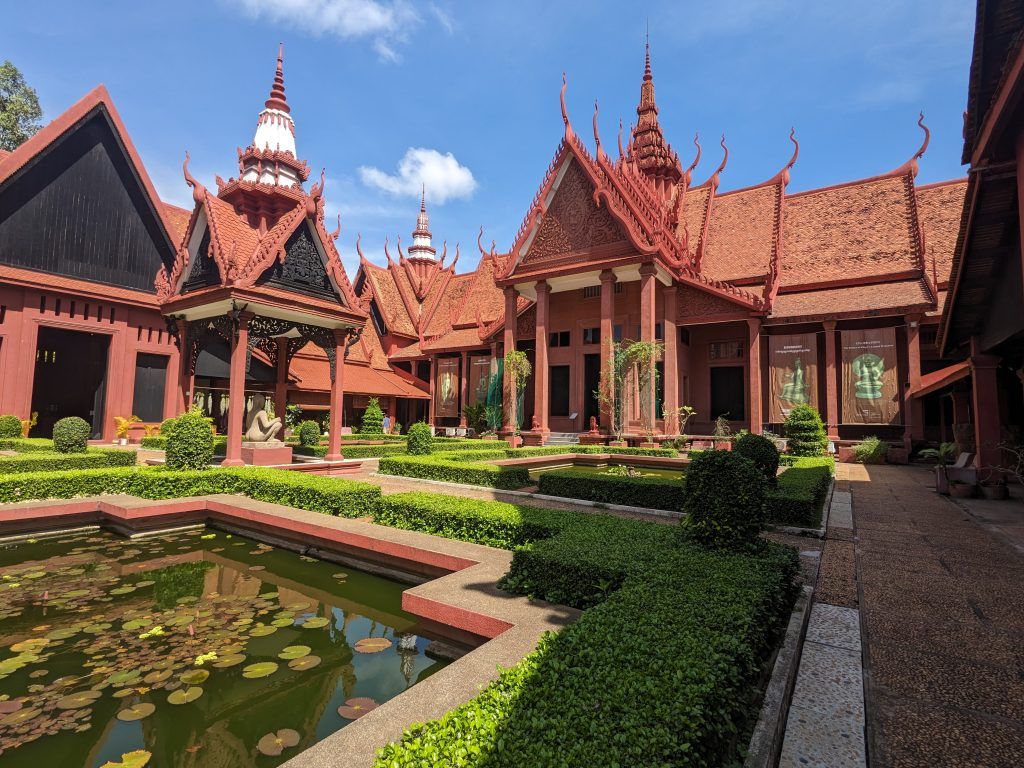
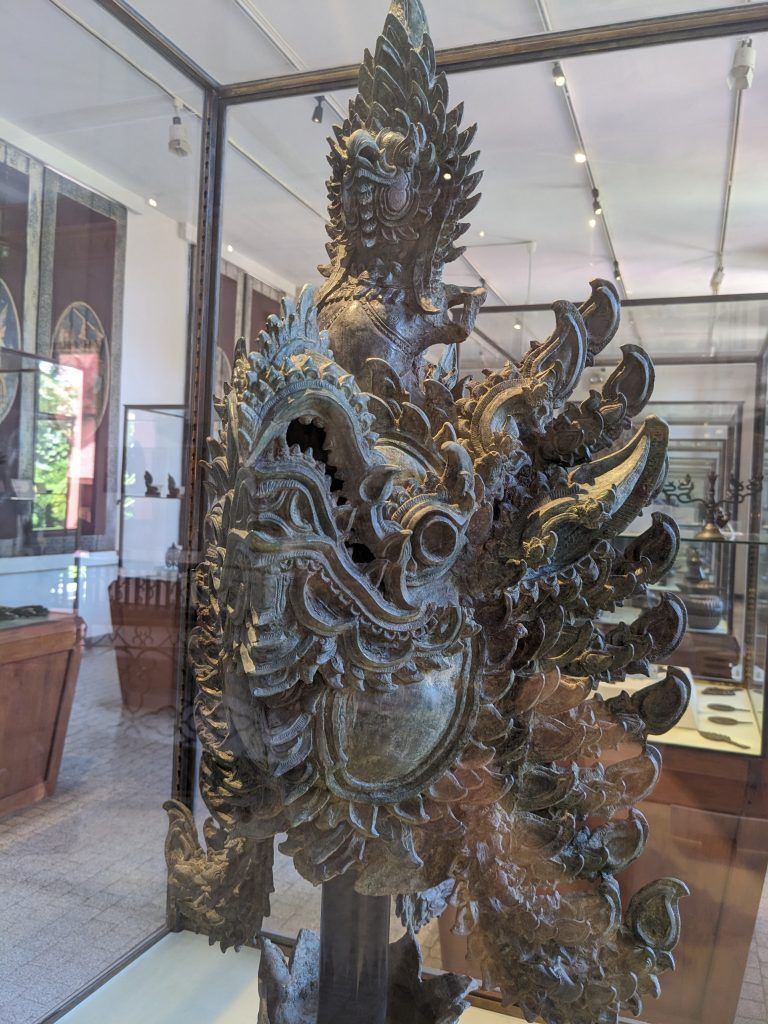
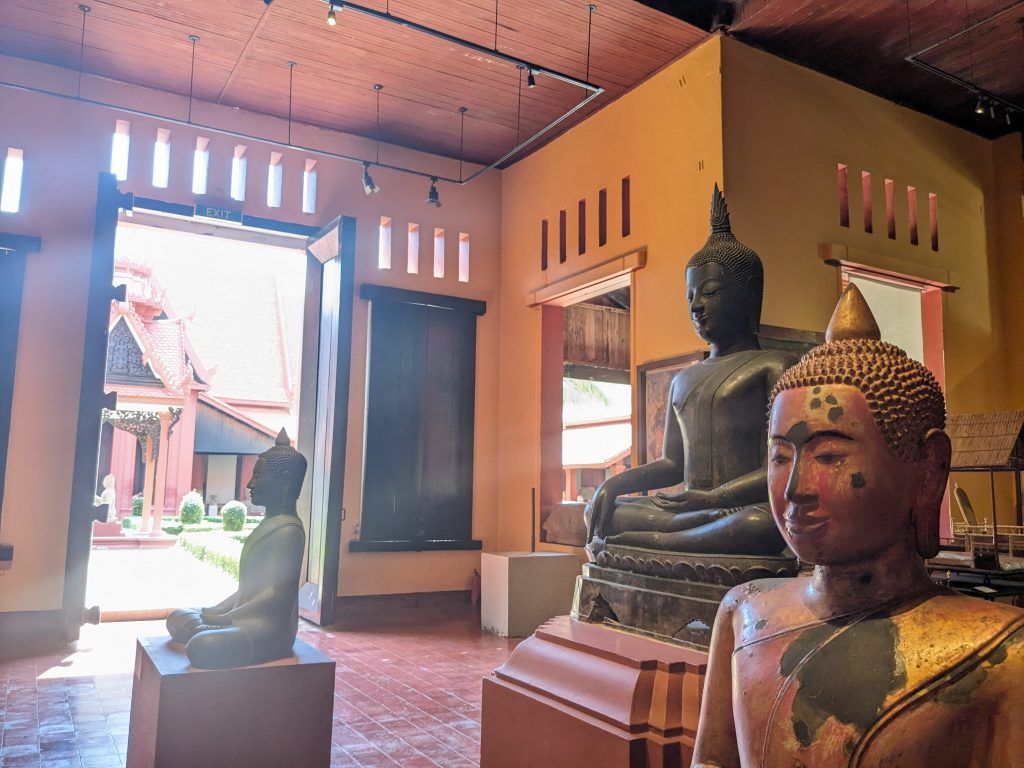
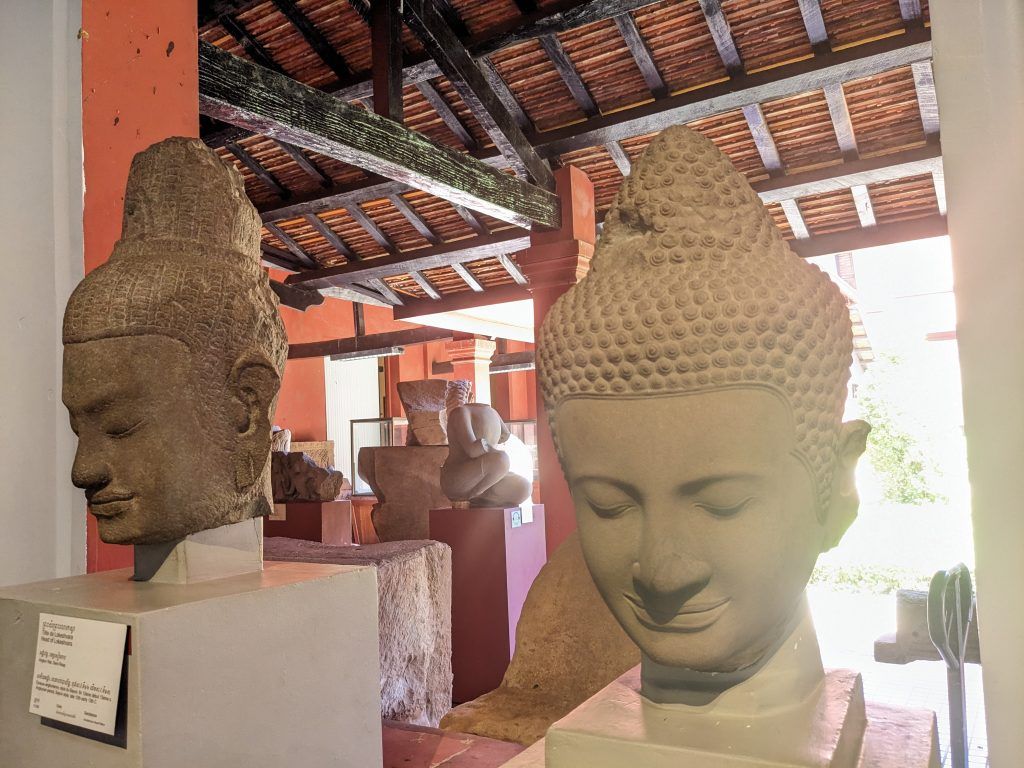
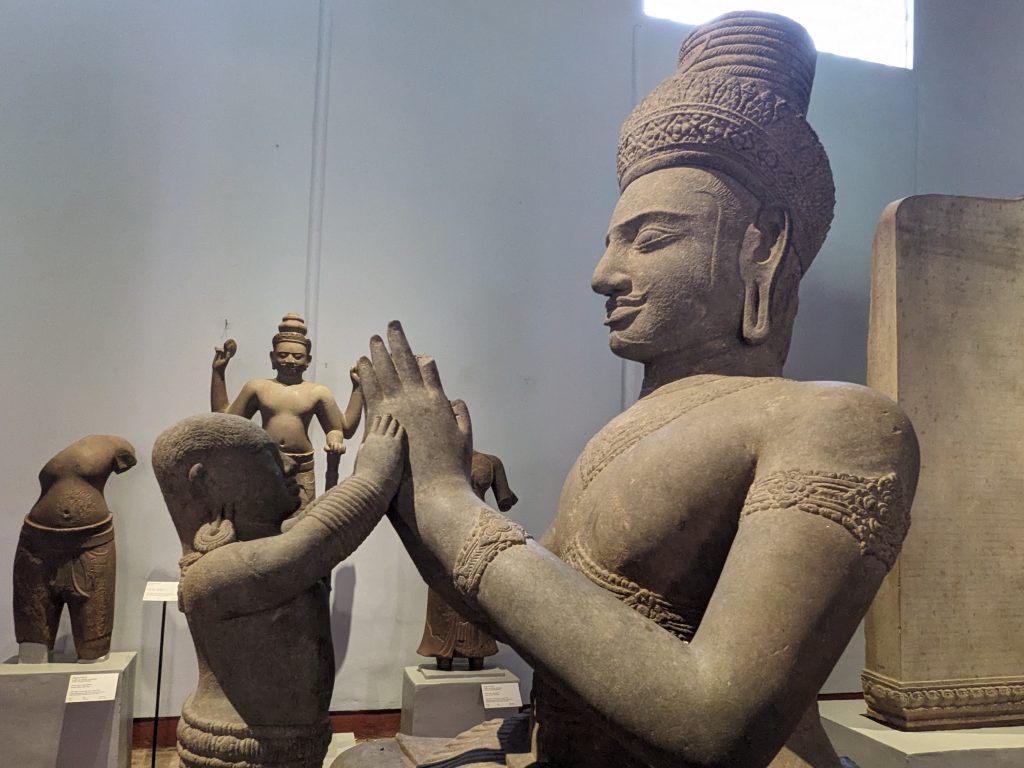
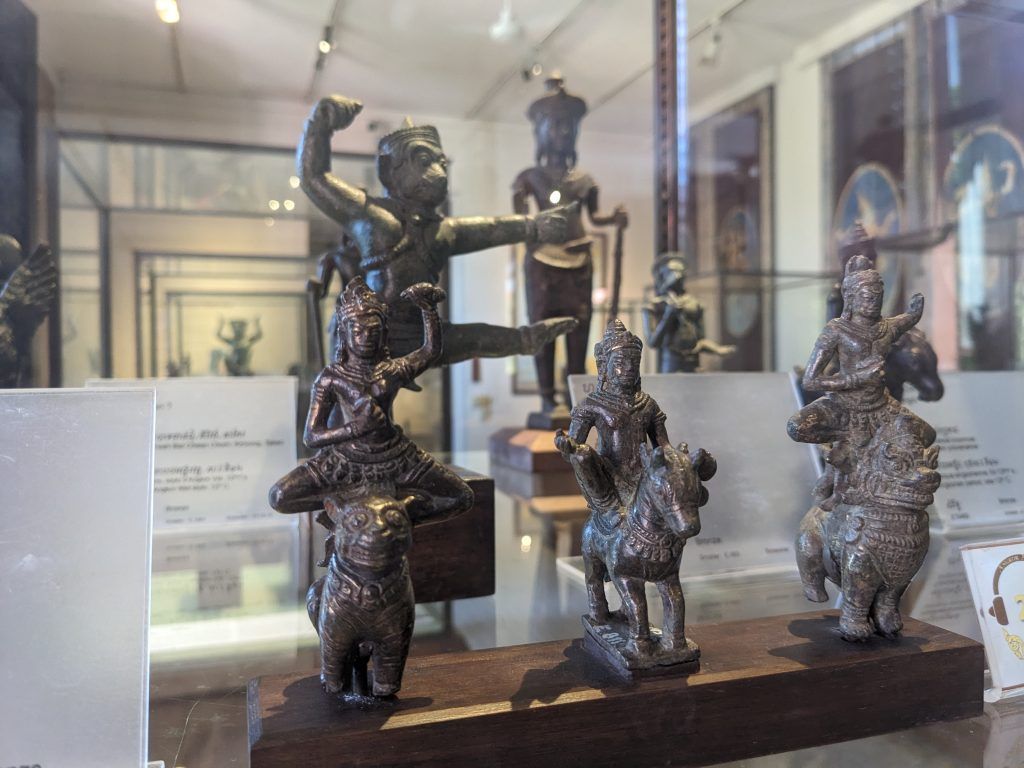
Tuol Sleng Genocide Museum
In 1975 Tuol Svay Prey High School was taken over by Pol Pot’s security forces and turned into Security Prison 21. It soon became the largest center of detention and torture in the country. Between 1975 and 1978 more than 17,000 people held at this prison were brutally tortured and then taken to the nearby killing fields of Choeung Ek.
The “rules” of the brutality documented below.
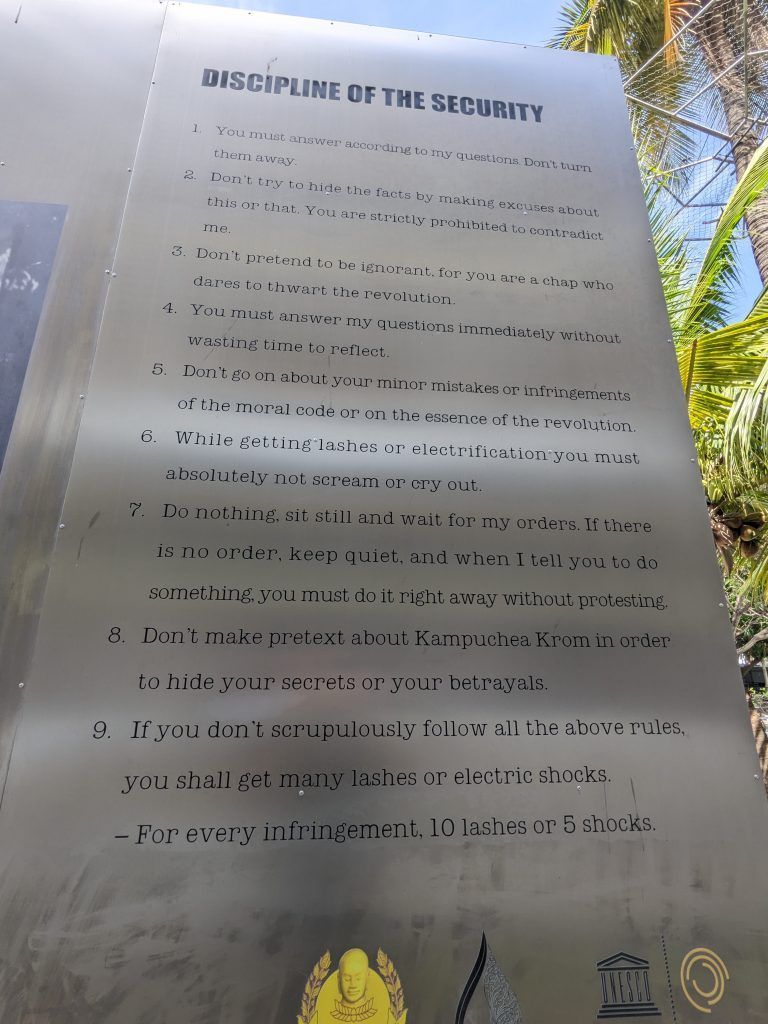
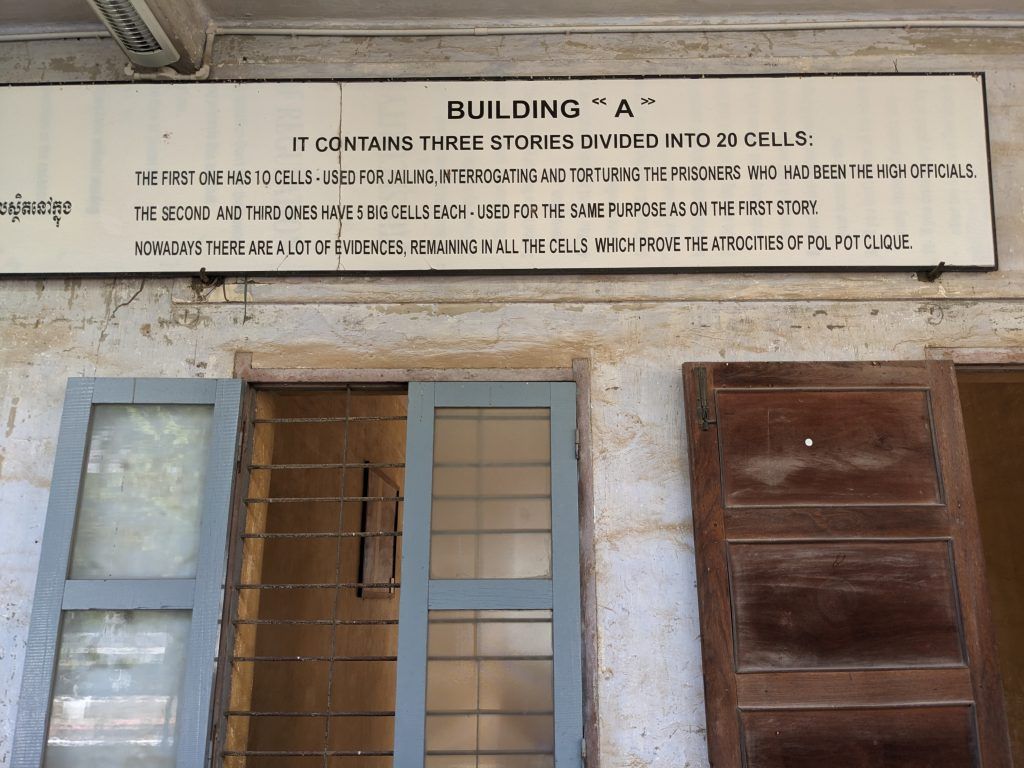
One of the torture rooms and a picture of one of the victims in that room found by the Vietnamese when they chased the Khmer Rouge out in 1978.
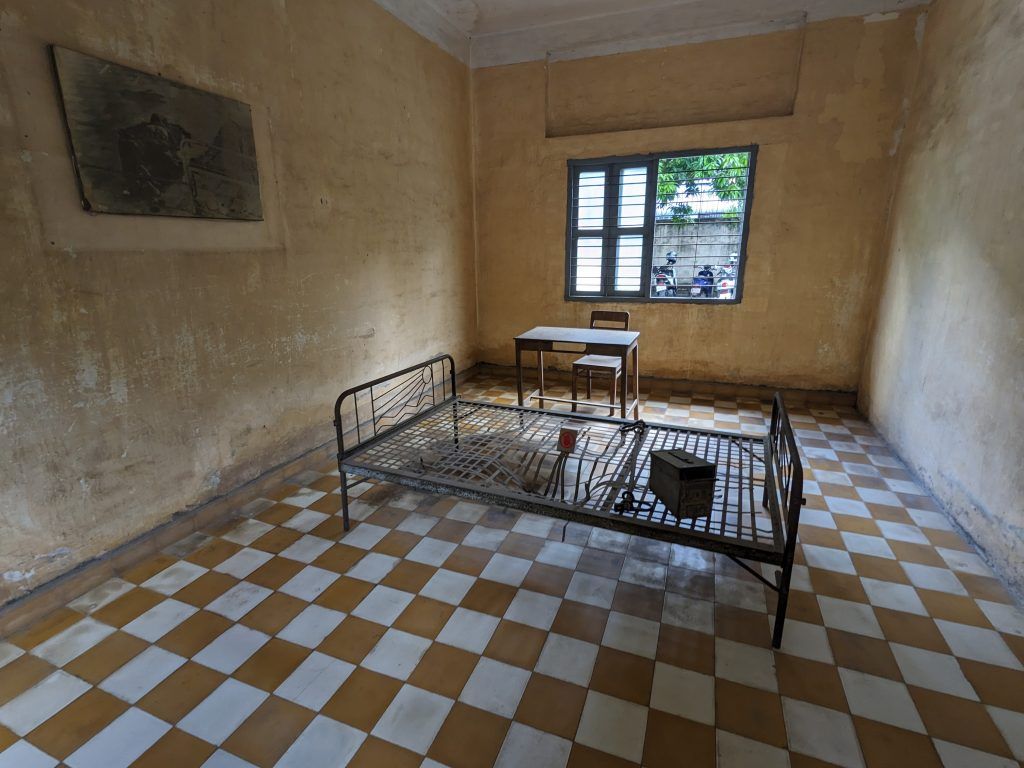
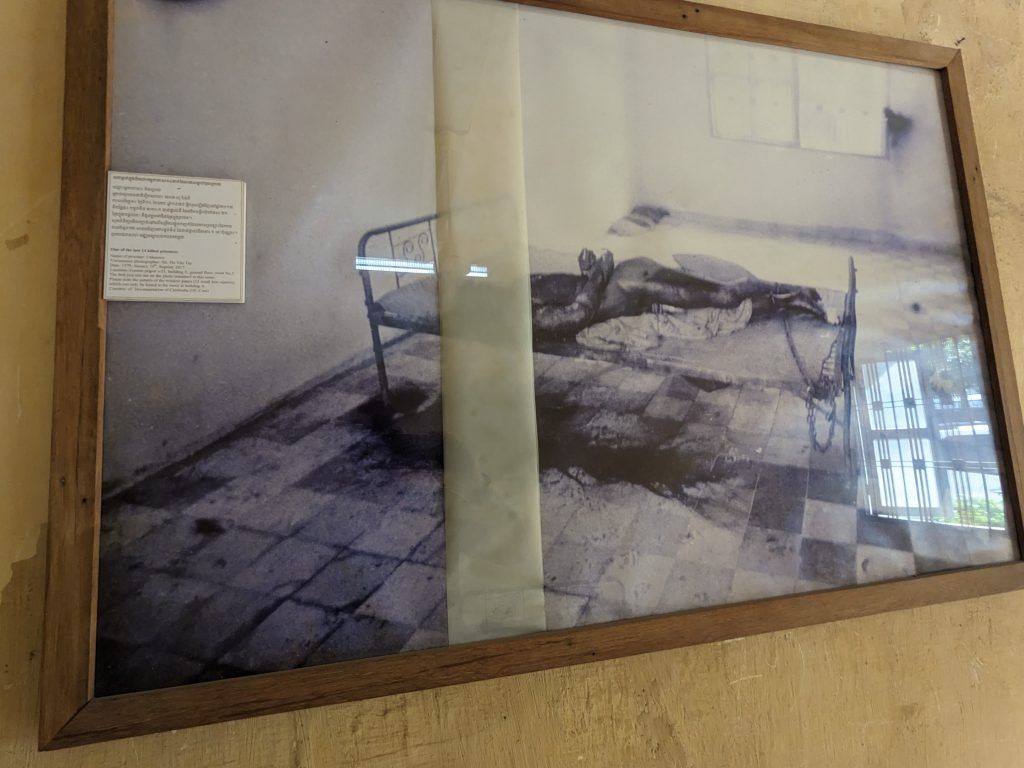
The tiny brick cells prisoners were housed in between beatings.
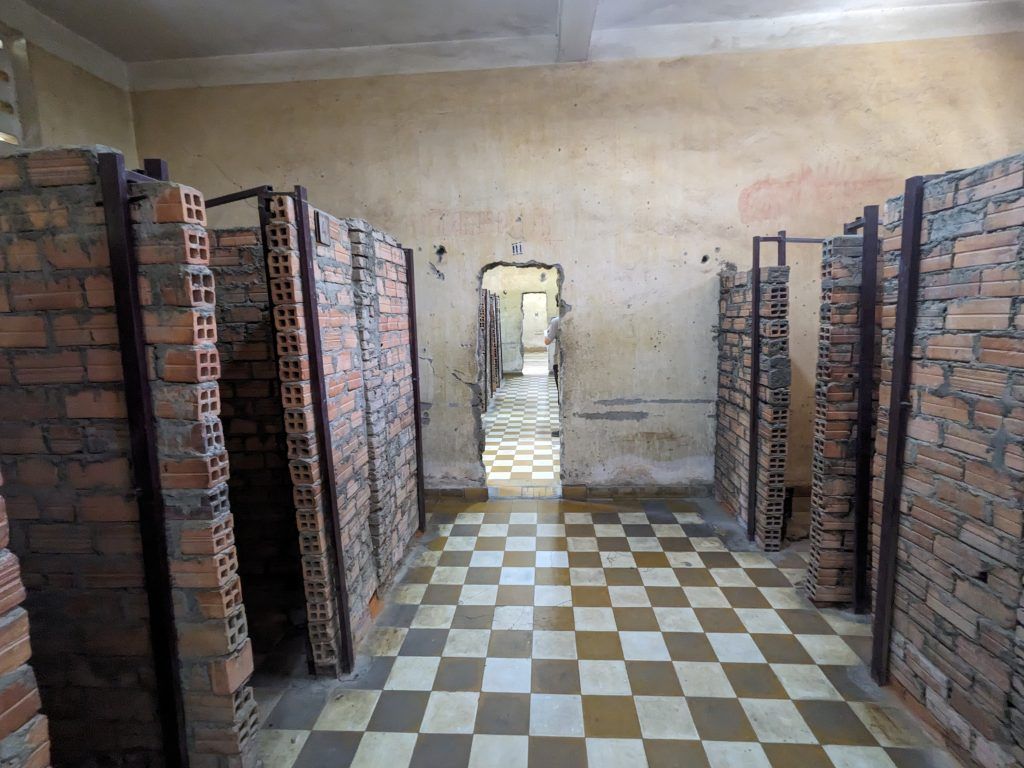
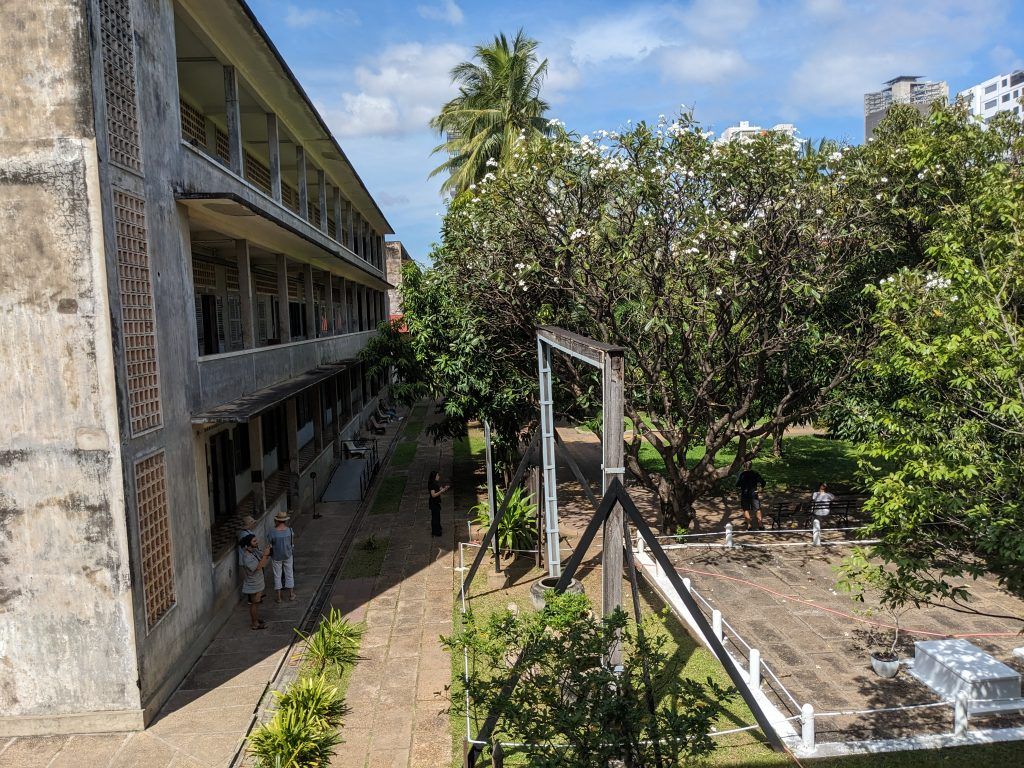
While most of the people were killed at Choeung Ek, some didn’t survive their tortures at the prison.
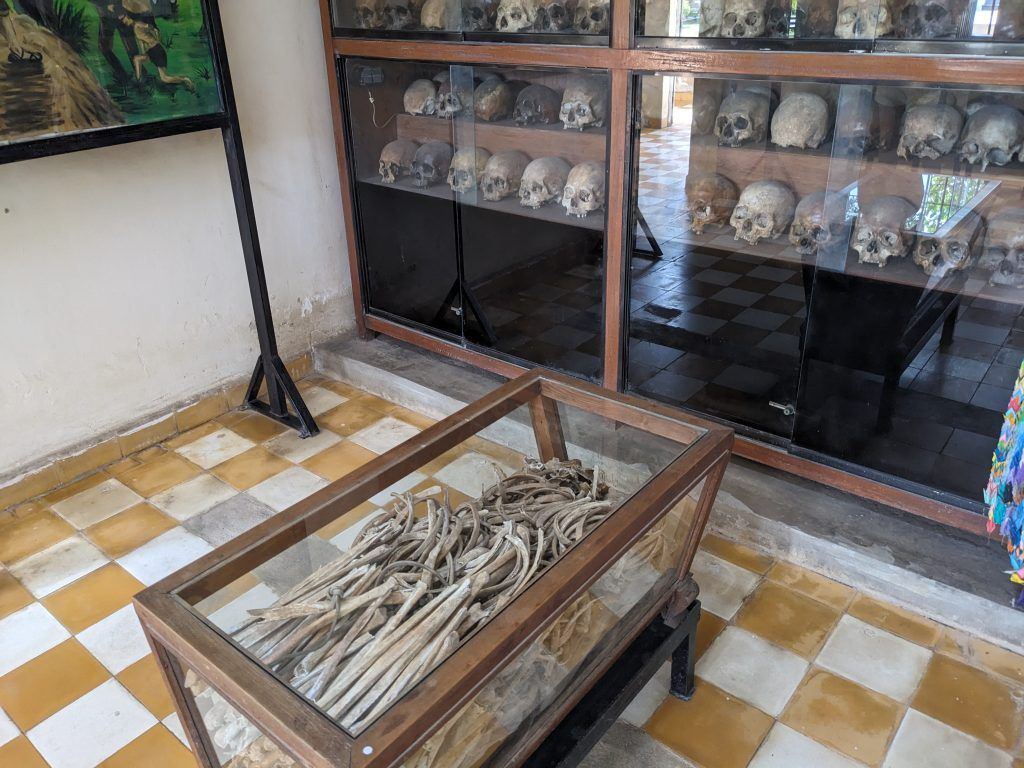
Choeung Ek Genocidal Center – The Phnom Penh Killing Field
In a place on the outskirts of Phnom Penh that was both an orchard and a small Chinese cemetary, the Khmer Rouge set up the largest killing field in Cambodia. It’s estimated over 17,000 people were killed here and they’ve exhumed almost 9,000 remains. It’s one of over 300 similar killing fields found all over Cambodia.
You can see the remains of the partially refilled mass graves all over the grounds.
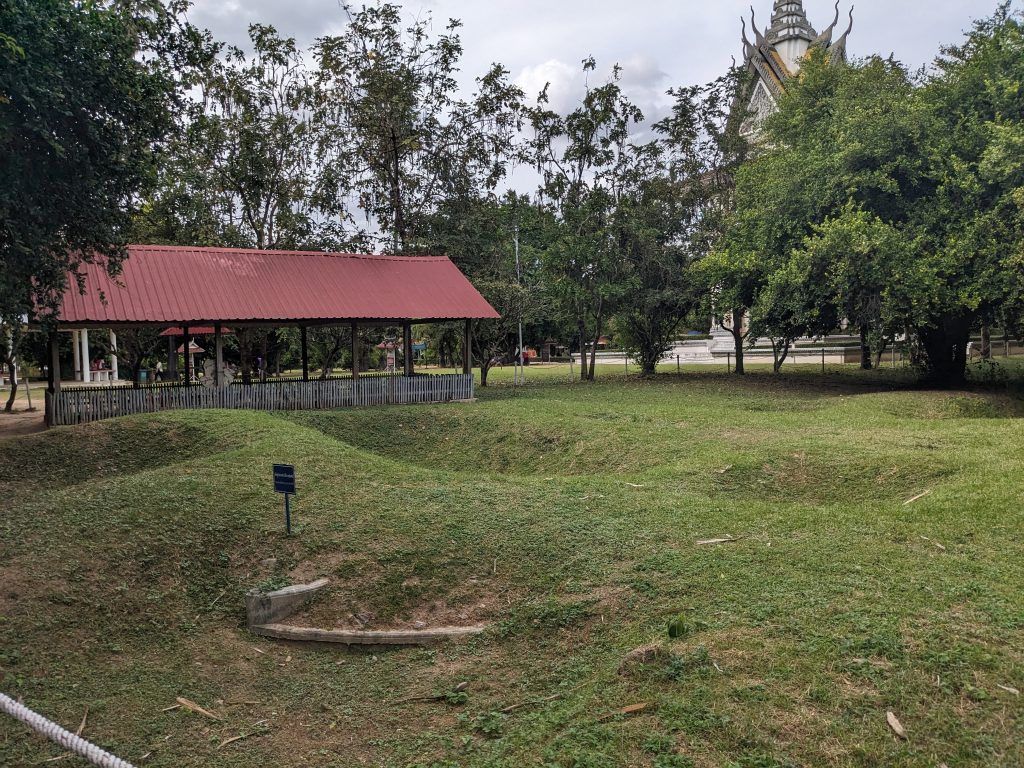
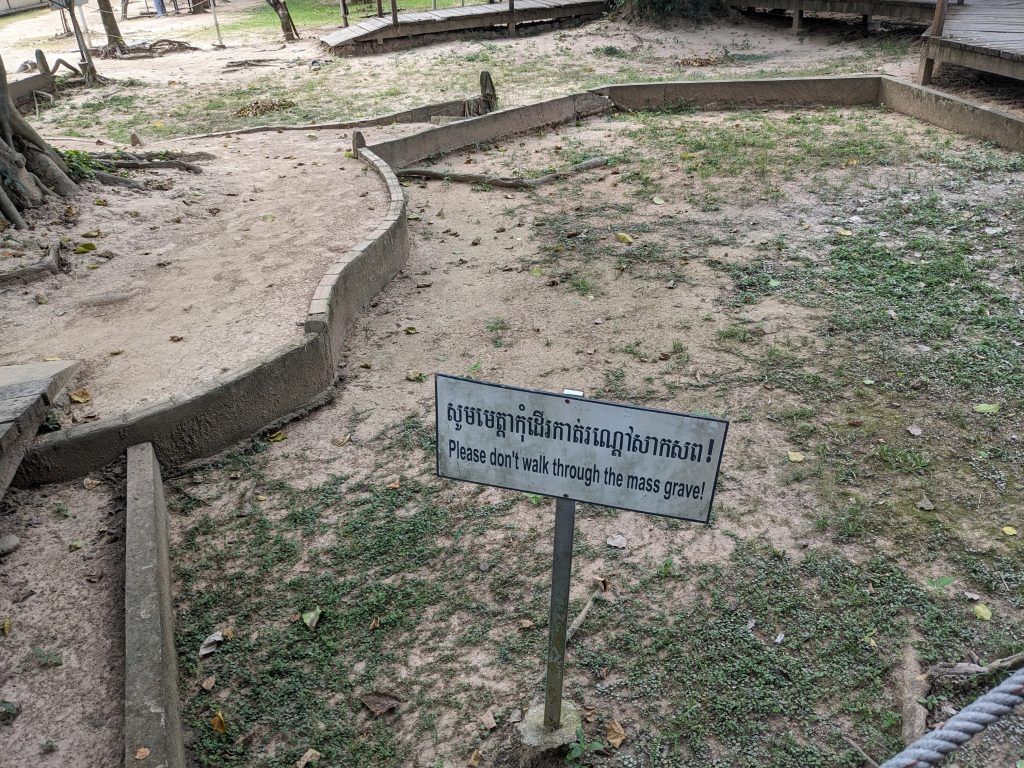
A tree where they found evidence of where the guards killed infants by holding their legs and bashing their heads against the trunk. The grave nearby had their remains along with their mothers.
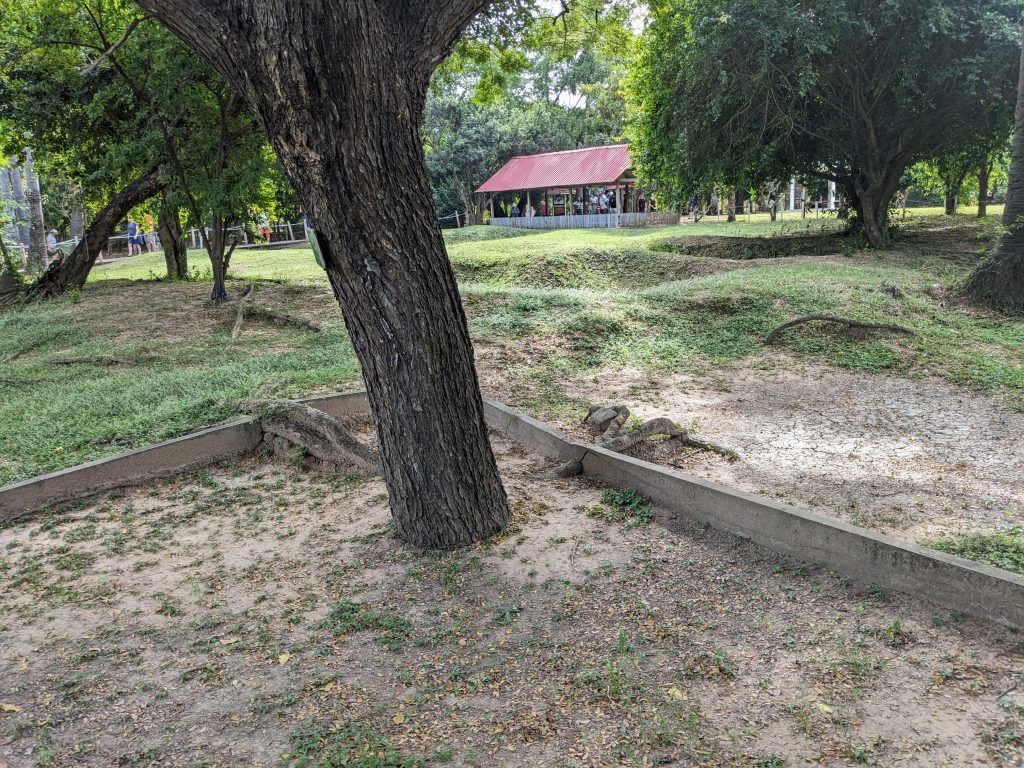
Where they buried 166 guards who rebelled. They killed them by beheading them in front of all the other guards as a warnning.
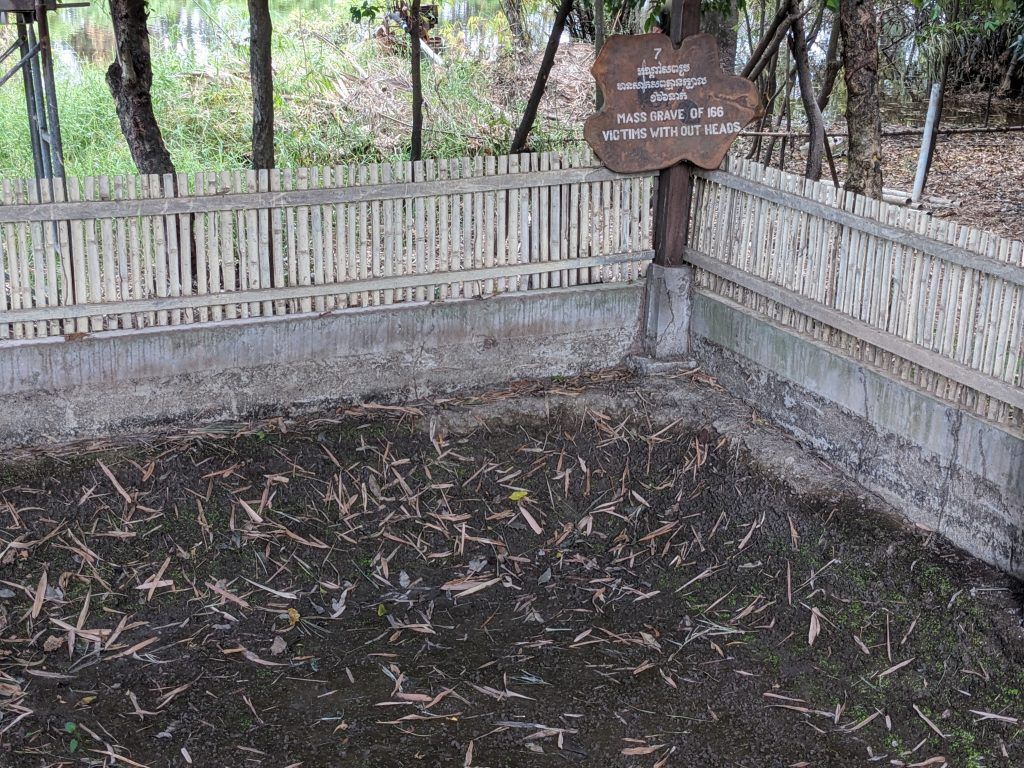
It’s actually a peaceful place if you can forget what happened there.
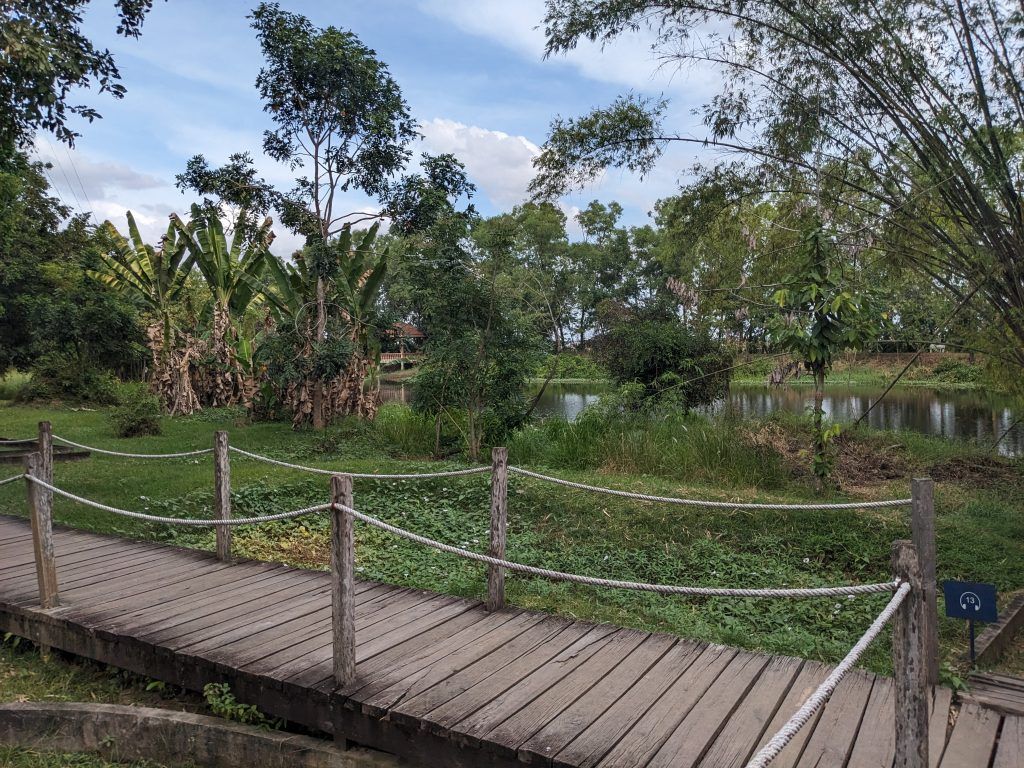
A huge Buddhist stupa was erected as a memorial. It holds the skulls of over 5,000 victims. Each one is catalogued as to how they were killed.
